Don't wanna be here? Send us removal request.
Text
BRANDY

When, in 1958, the brothers Silvio and Hugo Brandani founded the Vespas and Lambretas workshop - Lambrevespa - in Rua José Bonifácio, in the center of Ribeirão Preto, in the interior of São Paulo, they began to trace a success story in the two-wheeled market. With the passage of time and the emergence of new needs in the market at that time, Lambrevespa included in its services, manufacturing and marketing of parts and later changed its name to Lambrevespa Brandani. With business thriving, it was natural for more family members to join. Little by little, children and nephews were already in the two-wheeler business. In the early 1970s, the scooter and scooter market began to be replaced with the arrival of the Honda and Yamaha bikes, and Lambrevespa Brandani grew up, segmented into a commercial division - where there was the dealership and the motorcycle shop - and the industrial division - called Plasmotécnica, focused on the production of parts. In parallel to the world of motorcycles, the group also produced and marketed Brandani bicycles, which were famous for their accessories and bold designs, such as the telescopic suspension and the "banana" bench, which until then the market did not know, since they were items used only on motorcycles. About 300 thousand bicycles were produced, with 12 different models, from children's to models used in the transportation of loads. Sports models, such as Surf and Bikendur, have marked the epoch and, until today, are worshiped by collectors and lovers of bicycles. With the group of companies expanding in stride, the Brandani brothers chose strategically to divide it: Hugo taking over the industrial part, and Silvio taking over the trade division.
In the 1980s, Hugo Brandani put into practice an old dream. Joining successful experiences in bicycle manufacturing and motorcycle parts production, the businessman, in a bold decision, merged the two companies, creating the brand Brandy, a national motorcycle manufacturer that stood out in the market, mainly for its models of low displacement. The NS1 moped and the BX50 and TX50 minibuses were the first to be manufactured and used Argentinean Zanella and Minareli Italian engines. As early as the early 1990s, Brandy grew rapidly, and in 1993, with technical support from Her Chee from Taiwan and Hero Motors from India, Brandy set up a factory in Manaus, of Amazonas, aiming at the fiscal benefits of that region. In the late 1990s, Brandy signed a contract to manufacture and distribute motorcycles of the Italian brand Piaggio in Brazil, bringing the legendary Vespa back to the Brazilian market. . During the 1980s and 1990s, Brandy manufactured more than 20 models of motorcycles, among them the Elegant 50 Scooters and Pista 70, the Fox Quadricycle, the Fosti FT 125 Motorcycle, in addition to the best-selling models, which are the Jaguar Scooter and the Hero-Puch moped. The factory, located in the free zone of Manaus, was completed with the administrative part and distribution center, based in the city of Ribeirão Preto and in the mid-90's Brandy became the 3rd largest motorcycle manufacturer in Brazil, but at the end of 1998 the legislation of the Brazilian Traffic Code changed and began to require driver qualification, which until then was not necessary for 50cc motorcycles, drastically reducing the sales of this follow-up, this forced the change in the direction of the company. As of this year, the businessman Hugo Brandani already knew that the manufacture of motorcycles of low displacement had become infeasible and it was with the days counted. With this, the company was scheduled to close the company, which would last 2 to 3 years, so that consumers of the Brandy bikes would not be harmed by lack of parts and after-sales service, and the dealers would have time to change the direction of your business. In this turbulent period, in search of new horizons, BCF was founded in 2000, which became the main occupation of Hugo Brandani. His youngest son, Victor Hugo Brandani, who had worked at Brandy since he was 15, then took on an important role in the business, and that year with the full support and help of his father, they started the transition from the automaker of motorcycles, for import, manufacture and distribution of parts for motorcycles. From there came a renewed Brandy, which allied the experience and the knowledge of one of the pioneers in the market of two wheels the vision and daring of his son Victor Hugo. Accompanying the growing numbers of the motorcycle market in Brazil, the company quickly assumed a prominent role in the commercialization of motorcycle parts, with emphasis on the lines of Batteries, Transmission Kit and Lamps. Victor Hugo has exclusively handled the company since 2003, dealing with several situations during his administration in the last decade: his father, Hugo Brandani, in December 2008.
With the support of his mother, Leila, who has taken on an important role in of this moment, Brandy was able to overcome this difficulty and, in 2011, began the construction of its new headquarters, which is located on the bank of the Anhanguera highway. The new building was inaugurated in 2012 and has a solid structure and a capacity 3 times higher than the previous building.
'' I am proud to continue the history of a pioneer company in the Two Wheels business. I channel all Know How acquired in the manufacture of motorcycles and value the partners of suppliers that accompany the company for many years to offer the market high quality products, "concludes director Victor Hugo.
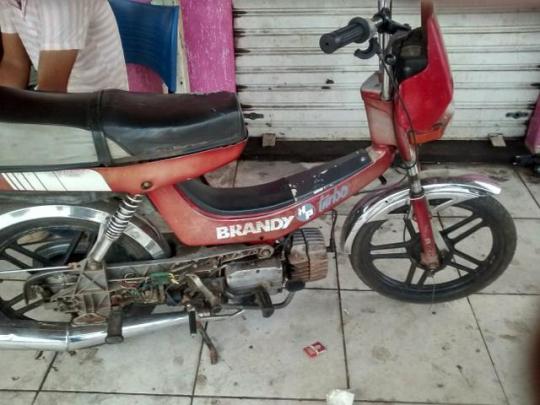
0 notes
Text
LEONART MOTOCYCLES

Leonart is a recent motorcycle brand, which appeared in Spain as a result of the boom of the validation of A1-B cards (which in reality is not exactly a validation, but hey ...)
If at the time I was already struck by the Spyder, a motorcycle of only 125 c.c. (later it came out in 250 cc), but with modified Harley-Davidson appearance and exaggerated fork angle, now I've seen the novelty that they prepare for in a few days: the Leonart Daytona 125/350 cc, an incredible beauty a pretty tight price.
Leonart appeared in Spain at a time in the market where dozens of Chinese motorcycle brands flourished like mushrooms in our country. And, as we already know, almost all of them disappeared as soon as the 125 boom passed, leaving hundreds of disgruntled users behind, with pots that fell apart after four days. They were very cheap, but very crappy motorcycles, mostly made with punches and designs plagiarized by recognized brands, since in China intellectual property is passed through the lining.
Fortunately, not all those brands were so unpresentable, and some have been finding their way, as, for example, Keeway.
Leonart is a Spanish brand that buys motors to China, but it applies the design of everything else in our country, just as the CSR brand does (although the latter with much less success, in my point of view). And the truth is that I must admit that with the Daytona model they have left: it is impressive. I was very convinced by the level of finishes of the Spyder (which I could see live at the Madrid show, if I remember correctly), but this one seems much better.
Of course, for those who like custom bikes, but we do not have about € 20,000, well, loose in your pocket, to buy a Harley in conditions, it is comforting to discover that there are other options. And I do not know how such Chinese engines will work, but with that aesthetic, I almost satisfied that they did not break.
Unfortunately, the engine press considered "serious" has not deigned to do a miserable test to any model of this brand, which seems a shame. They could do a little more work. And if they have to give birth, put them, but try them. I just remember a test of the Spyder 125 in the minority magazine (but interesting) Easy Moto.
And with that said, I invite you to visit its website and admire in more detail what these people are going to put on sale shortly. If version 350 c.c. (with 28 C.V. declared power) works medium well, I will seriously consider it.
Prices? € 3,600 for the 125 version, and € 4,600 for the 350c.c.
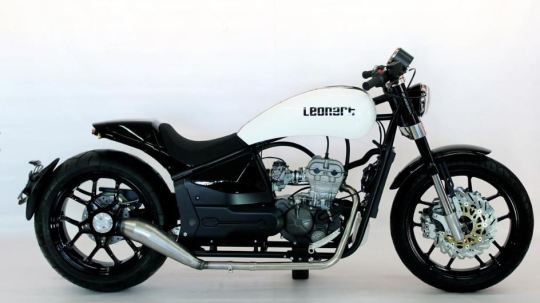
0 notes
Text
HISTORY OF Husqvarna

Motorcycling is a growing area that is gaining more and more fans around the world. The pleasures of motorcycle rides, or even long trips with friends, are undeniable.
Life on two wheels, besides being pleasant, can be quite practical, since the bikes are smaller and more agile than the other vehicles present in the transit of the big cities.
In the cycling bike scenario, some brands stood out, designing models venerated by the demanding pubic motorcyclist. Some people find it impossible to talk about great motorcycles and the history of motorcycle ascension, not to mention Husqvarna, a Swedish motorcycle manufacturer, derived from the Husqvarna Vapenfabrik (Husqvarna weapons factory), which was founded in the 17th century by King Karl XL.
Get to know more about the company history below.
History Like many other motorcycle manufacturers, Husqvarna began its activities with the production of bicycles, moving slowly to motor vehicles. Know the main steps of the company's history in its evolutionary process:
First bikes The first bike of the Swedish manufacturer came in 1903 and had a 1.2 horsepower engine. Although not very popular, this model was about three times more expensive than a conventional bike. A few years later, in 1907 and 1908, Husqvarna came with more powerful models, managing to sell 14 units.
The first engines built by the brand The company developed its first 500cc engine in 1919 and was in production until 1932. Two years later the brand developed another 994cc engine but remained focused mainly on small bikes for the general public.
Popular Templates The most popular models had 175 and 250cc engines, and thanks to them, the Swedish company recorded an impressive success during the 1920s and early 1930s.
Period war After World War II, in 1946, Calle Heindahl became the general director of Husqvarna. Under his management, two new models were launched, the Black Mill and the 1954 Red Mill.
In 1953, Husqvarna continued production of new motorcycles on the Drombagen motorcycle, followed by Silver Arrow two years later. In 1962, Husqvarna stopped manufacturing motorcycles, and reentered the market in 1965, when it focused mainly on the production of motocross, cross country and enduro bikes.
Sale of company Electrolux bought Husqvarna in 1977, and the main motorcycle factory moved to Odeshog. Another major change in ownership of Husqvarna came in 1987, when Cagiva bought the Swedish company.
During the 1990s, Husqvarna focused more on the Enduro World Championship, winning at least once in each unique category between 1990 and 2003.
Period of low popularity and big losses in competitions The 1997 season was extremely disappointing for the Swedish company because they were defeated in every possible category.
The most recent victory of a Husqvarna motorcycle in motoring was achieved in 2005 by Gerald Delepine who became the Supermoto World Champion by setting up an SMR660.
Evolution Husqvarna competed in the Grand Prix of road racing in the 350cc and 500cc classes during the 1930s and was the largest motorcycle manufacturer in Sweden in 1939. All racing motorcycles were based on a prototype 50-degree, V-twin engine built by Folke Mannerstedt in 1931. They were made up of aluminum cylinders with solid valves. Throughout the evolution of the company, some facts are considered of extreme importance. We selected, in order of chronological importance, the events that built the brand's renowned name, The company team succeeded at the Swedish Grand Prix in 1931, which set the motorcycles before the demanding public. In 1935, the company withdrew its support in racing participation, but new bikes were produced and started to compete in private circuits, while the company focused on the production of a new motorcycle with a 2 stroke engine. In the same year, Stanley Woods won the Swedish GP in a 500cc. In the 1960s, its lightweight off-road bikes with two-stroke engines helped take control of four-stroke British bikes. Throughout the 1960s and 1970s, Husqvarna was a dominant force in the world of motocross, winning 14 world championships in the categories of 125 cc, 250 cc and 500 cc, in addition to 24 world championships of enduro. In 1987, the Husqvarna motorcycle division was sold to Italian motorcycle manufacturer Cagiva and became part of MV Agusta Motor. The motorcycles, known as "Huskies" / "Husky", are now produced in Varese. Husqvarna went on to produce a diverse range of bikes, including motocross, enduro and supermotos, using its own two-stroke or four-stroke engines ranging from 125cc to 576cc. In July 2007, Husqvarna motorcycles was purchased by BMW for a reported € 93,000,000. BMW Motorrad planned to continue operating Husqvarna Motorcycles as a separate company. All development, sales and production activities, as well as the current workforce, remained at its conventional location in Varese, Italy. Existing ranges The brand presents a great variety of ranges and models of motorcycles, able to please all the public. Check out the existing ranges and models.
Enduro The bikes in this category are machines designed for race courses that are predominantly off-road. These models are able to overcome many different obstacles and challenges.
And in this modality the brand developed the models: WR 125, WR 150, WR 300, TE 250, TE 310, TE 350, WR 360, WR 390, WR 430, TE 410, TE 450, TE 449, TE 510 , TE 511, TE 570, TE 610 and XC 500.
Motocross Motocross is a form of motorcycle racing performed in closed off-road circuits, and for this category the company developed the following motorcycles: CR 125, CR 150, CR 250, CR 250, CR 390, CR 400, TC 449, TC 450, CR 500, TC 510, TC 570 and TC 610.
Supermotos In the following we have the following models: SMS 125, SMS 4 125, SMR 449, SM 450R, SM 450RR, SM 510R, SMR 511, SM 530RR, SMR 570, SM 610IE, SM 610R, SM 610S, SMR 630 and Nuda 900 .
Dual Purpose We have the: WRE 125, TE 125, TE 410E, TE 610E, TE 630 and the TR 650 Strada / Terra.
Curiosities The first "Husky" motorcycles used imported engines, and it was only after 1918 that Husqvarna started producing machines built entirely from home. Around that time the company got a contract with the Swedish army and started entering cross-country events and participating in long-distance motorcycle races.
With the obtaining of the contract of production of motorcycles for the Swedish army, the mark has become one of the largest producers of machines for the military sector.
In 1920, Husqvarna set up its own engine factory and the first engine to be designed was a 550-cc four-stroke, 50-degree, side valves and V-twin architecture, similar to those made by companies like Harley-Davidson.
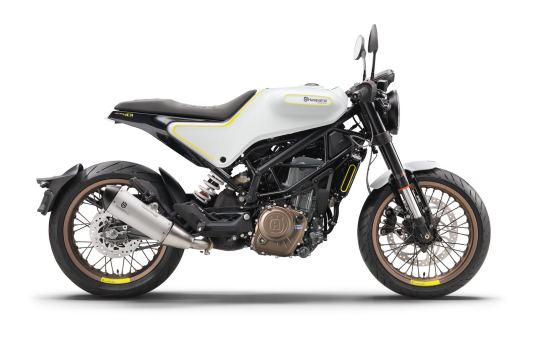
0 notes
Text
History of GILERA
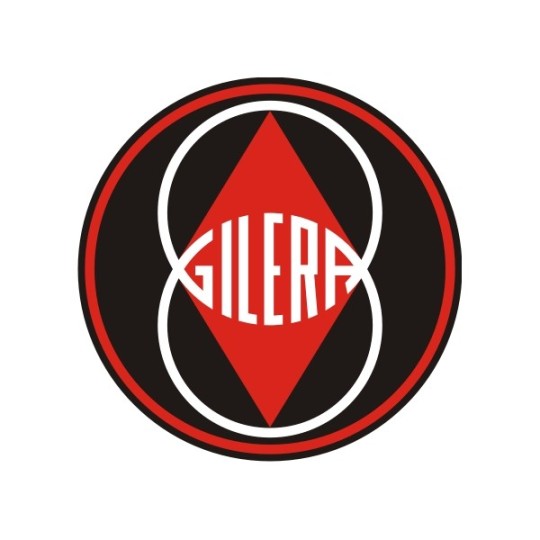
History Founded in 1909 by Giuseppe Gilera in Arcora, Lombardy, northern Italy, the first motorcycle to leave the modest production line was the VT 317. However, the brand has always had its name linked to the competitions. Shortly after World War I, Gilera built a 500cc, with which it won the most important competitions of the time. In 1936, the company manufactures a new 500cc inline four-cylinder engine. This configuration gave Gilera several world records of speed. The following year, the pilot Dorino Serafini wins a victory in the European Championship. After the Second War, the Gilera presents the Saturn 500, model with a new engine of four cylinders and 500cc. With this bike, the brand has locked "epic" duels with Norton, Moto Guzzi and MV Agusta. Between 1950 and 1957, Gilera won six titles. In this same period, the Italian team has won three times the traditional Tourist Trophy, race that happens until today in the Isle of Man (United Kingdom). Before officially retiring from competitions at the end of 1957, Gilera won 40 GPs.
Gilera 100 years World Champion In 1969 the brand was acquired by the Piaggio Group. On its return to the world of competitions, Gilera also participated in off-road competitions. Already in the 80's, the company bet on four-stroke single-cylinder models - the first versions of the 350 and 500 series and later the 600cc. In fact, the RC series enduro bikes (600 and 750) have won two victories in the Paris-Dakar, in addition to one in the Rally of the Pharaohs. In 1993, the production was transferred to Pontedera (Italy) and thus Gilera began the development of scooters and maxiscooters using the know-how of Vespa and Piaggio. In 2001, the manufacturer won the World Championship of Motovelocidade, category 125, with the pilot Manuel Poggiali. It is the first title since 1957.
In 2006 Gilera returns to category 250. The 2008 season marks the first victory in the history of the brand in the category. Marco Simoncelli wins the Italian GP in Mugello. At the end of the season, Simoncelli enters the Gilera story. He is the first Italian champion of the world by Gilera, 51 years after the conquest of his compatriot Libero Liberati (1957, with a 500cc).
Commemorative templates The Fuoco, GP 800 and Nexus scooters were the models chosen for the Gilera 100-year commemorative series. The inspiration for the new design came from the colors of the Italian flag. In addition to the new look, the three scooters have several technological solutions. In this sense, Gilera synthesizes two fundamental values in its products: sportsmanship coupled with bold and innovative style. The Fuoco 500ie remembers the Piaggio MP3, since both have two wheels in the front. With a four stroke engine of 492cm³ is equipped with electronic fuel injection. The propeller has maximum power of 40 hp at 7,250 rpm. Thus, the Fuoco can reach up to 145 km / h of maximum speed. The maxiscooter GP 800 can be considered a revolutionary model. It is the first scooter equipped with a twin-cylinder engine at 90º. With electronic fuel injection, the engine 839.3 cm³ generates 75 hp maximum power. The transmission system relies on the traditional automatic continuously variable gearbox (CVT). Beautiful and comfortable, the GP 800 can be used in urban traffic or on fun trips.
Finally, the Nexus 300ie features a brand new powertrain with more sporting features. The new liquid-cooled Quasar four-valve 278-cc engine is fitted with electronic fuel injection. The propeller produces 22.4 hp at 7,250 maximum power and also has the practicality of variable transmission.
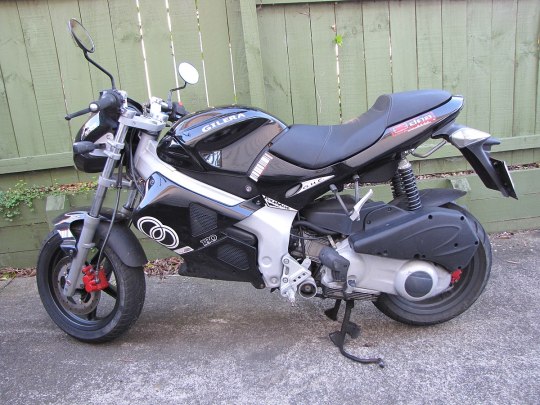
0 notes
Text
History of CAGIVA
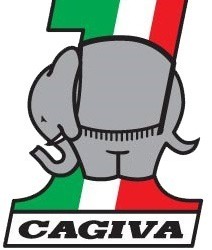
Not only super sports four-cylinder and 1000cc lives the man. There are small jewelry of 125 cubic centimeters which, in terms of design, technology and finish, owe nothing to anyone. A beautiful example of this category and what has become a modern classic is the Cagiva Mito. A fantastic little one that, besides being the motorcycle that started the champion Valentino Rossi in the competitions of motorcycle speed, was re-stylized in its more iconic drawing by none other than Massimo Tamburini, considered by many like the Michelangelo of the motorcycles.
As if it were not enough to be a small, agile bike with a clean and classy design (thank you, Italy), Mito is perhaps one of the last resisters of the beloved 2-stroke engine, famous for its unusual performance but unfortunately, over time, has been increasingly restricted and off the streets due to increasingly stringent regulations on the emission of pollutants.
The Mito was launched in 1989 with its single-cylinder 125cc 2-stroke called the Mk I. Later came the Mk II model with inverted front suspension and new for front mud. Already in the 90's, the bike became the arch-enemy of Aprillia Futura AF1, also a 125 2 times Italian rival.
It was in the 90's that Mito performed one of his greatest exploits as a motorcycle. After the success in the mini bikes, the champion Valentino Rossi decided to rise of category and happened to compete with a Myth. It was with her that competed in category 125 in the Italian championship in 1993. She suffered falls, ups and downs and continued to learn until she qualified ninth in the competition. The following year, also with a Myth, won the title of the championship. From there to the race at the speed bike, it was a jump. Nothing like a myth to start another!
Still in the 90's, Cagiva Mito won one of its greatest gifts: it was redesigned by Italian designer Massimo Tamburini in a homage to the equally iconic Ducati 916, also designed by Massimo. The 125 gained the lines of the Ducati 916 and it was in this drawing that was known by the world. Massimo worked for Cagiva, Ducati and MV Agusta as well as being one of the founders of Bimota. Its Ducati 916 and MV Agusta F4 went to the prestigious Guggenheim museum.
The bike gained a new and discreet redesign in the Evo II model (the model of Massimo was called Evo), different wheels with 6 spokes in place of 3 and 6 marches instead of 7 of the original Evo.
In 2005, another re-stylization called 525SP. This time in honor of Cagiva's race bike in 1994 on the GP motorcycle, the GP500 of the pilot John Koscinski, who in that year got a great result getting third in the championship. The lines of the little Mito, mainly in the rear and front, began to remember the Cagiva 500 of John Koscinski. But this version was only for track. In 2008 alone the factory launched a street version of the 525 with a series of modifications to meet pollutant emission legislation such as a carburetor ECU, catalytic converters and an electronic oil pump.
In 2006, at the EICMA fair, a Cagiva Mito 500 4 times was presented as a prototype that never went into production.
In 2012, after a long career of success and admiration, Mito left the line. The latest models produced were signed by the CEO of MV Augusta, Giovanni Castiglioni. Explaining: Cagiva had bought the rights to the MV Augusta brand that became the company's main brand.
Curiously, the earliest Myths were braver than the last model 525. The Myth of the Evo generation had 33 horses versus 24 of the 525, probably a result of the suitability of 2-stroke engines for the pollutant emission rules. Even so, Mito has always been a beautiful bike and object of desire of many people who always understood very well the saying that size is not document.
The Myth became relics all over the world. Here in Brazil it is very difficult to see one of them walking the streets. For some reason, they disappeared from the market. It was common to find them on sale some 10 years ago for very attractive prices. Today is almost impossible.
They are low-powered entry-level motorcycles that have the mark of Italian design and technology, and have adopted top quality components for more than 20 years when almost no other manufacturer dared to do that. Only a few years ago that other brands understood that there is an audience for motorcycles of low displacement that cherish quality and design. See the success of Ninjinha 250 and 300 when they were released here. But like Mito we probably will not see anything like it. If you have one, enjoy it and take good care of it because you have a relic and an important part of motorcycling history in your garage!
Motorcycles sisters Myth also gave rise to a variant. Basically a Myth with new clothes and without fairing, in a design inspired by the Ducati Monster. It was Cagiva Planet that underwent a unique re-design and received the new name of Raptor.
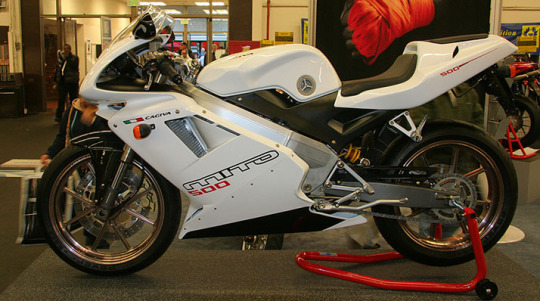
0 notes
Text
History of Benelli

Benelli is a motorcycle manufacturer founded in 1911, in Pesaro, Italy. Teresa Benelli invested all her capital so that her six children could have their own business.
At the beginning, the company was called Benelli Garage and was dedicated to the repair of automobiles and motorcycles, in addition they produced the necessary spare parts for the repairs.
In 1920 Giuseppe, Giovanni, Francesco, Filippo, Domenico and Antonio Benelli manufactured their first two-stroke homemade engine, with 75cc and one cylinder. It was adapted to the frame of a bicycle.
In 1921, the firm built its first 98cc motorcycle. Two years later Benelli became interested in motorcycle competitions, so Antonio Benelli decided to participate by driving a sport version of the first model manufactured by the company.
Follow this link if it is of interest to know the history of other recognized brands of motorcycles.
Benelli managed to win the Italian championship in 1927, 1928, 1930, and 1931. In 1932 Antonio died tragically in a traffic accident. In 1939 he made a racing bike with a four-cylinder and 250cc engine.
In 1949 Giuseppe Benelli resigned and founded Motobi. In 1951 the Leoncino models of 98cc and 125cc available in two and four times were launched. In 1962 Benelli acquired Motobi, so he was able to produce around 300 motorcycles, in addition to having a total of 550 employees.
In 1969, it launched the Tornado 650 57 hp, 7,400 rpm, and a top speed of 188 km / h. This motorcycle was sold mainly in the United Kingdom and the United States. In 1972 it was renamed Benelli Tornado 650 S and was discontinued in 1974.
Benelli had a bad time like the rest of the European motorcycle manufacturers, when Japanese firms entered the European market. Although he was selling many models in the American market, Benelli stopped production in the late 1970s. This lasted a few years, until Giancarlo Selci decided to revive the company, however things did not turn out as Selci wanted.
Benelli had to wait until 1995 to find someone capable of reviving the brand. This person was Andrea Merloni, who helped develop the Tornado 900 Tre motorcycle in 2002, a sports model. Currently the Italian manufacturer is part of the Chinese group Qianjiang.
Historical summary of the manufacturer's milestones:
1911: Benelli is founded. 1920: The Benelli brothers manufacture their first two-stroke engine. 1921: The brand develops its first 98cc motorcycle. 1927 to 1931: Antonio Benelli wins the Italian championships in a sport version of the first model manufactured by the firm. 1939: A 250cc racing motorcycle is launched on the market. 1949: Guiseppe leaves the company and founds Motobi. 1951: Leoncino models of 98cc and 125cc are launched on the market. 1962: Benelli acquires Motobi. 1969: The Tornado 650 model is unveiled to the public. 1974: The Tornado 650 series is discontinued. 2002: The Tornado 900 Tre motorcycle developed by Andrea Merloni is launched.
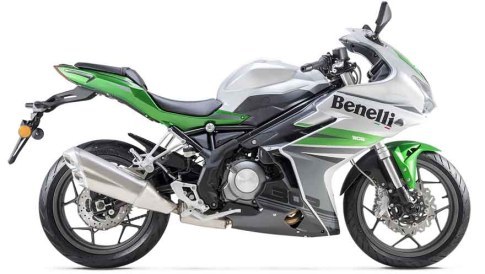
0 notes
Text
DAELIM

Daelim Motor Co. Ltd. is a manufacturer of motorcycles, quadricycles and mopeds; of South Korean origin. It is the undisputed leader of the segment in the Asian country mentioned. It belongs to the Daelim Group, which also focuses on real estate projects, electric and electrical plants, oil and chemical refineries and industrial facilities. But the division we are interested in talking about is expressly dedicated to producing motorcycles with a displacement of less than 250 cc.
The main factory is located in Gyeongsangnam-do, South Korea. It has auxiliary factories in the city of Changwon. With around 10,000 employees worldwide; It is capable of manufacturing approximately 600,000 units per year, distributed all over the planet.
The high quality of its products is widely recognized all over the world; and endorsed by the important ISO 9001 certification. But with special emphasis, it is a very popular brand in the following countries: Germany, Spain, England, France, Italy and Iran.
Daelim was founded in 1939 as a supplier of building material, which later became Daelim Industrial. In 1966, work began overseas, along with Korean construction companies. In 1976 Daelim Co., Ltd was founded, focused on producing motorcycles. The brand began to receive significant support from Honda in 1981 when the Japanese giant gave them valuable technical support to make the bikes in a better way.
In turn, the petrochemical division of the business group started production in 1987 after the merger with Honen Ethylene Co. Ltd. Daelim was introduced in the markets of Portugal and Spain in 1997, the subsidiary Daelim Ibérica. Later in 1999, Daelim Grop other segments experienced significant growth, making it able to offer building services, civil construction, electrical works and power plants.
They began to enter the world motorcycle market, becoming present in South American countries with developing or emerging economies such as Colombia, Ecuador and Bolivia. In Europe, in addition to Portugal and Spain (as already mentioned), they emphasized countries in the Mediterranean, such as France and Italy, where there is a constant demand for mopeds. In 2005, the personalized motorcycle called Daystar - its most recognized model in Spain - became the best-selling motorcycle in the country in its category.
The most recent achievements of the Daelim Group in various industrial fields are in general: The alliance with Phillips Petroleum to establish KR copolymer in 2000. In 2003 the construction of a Shin-Kori nuclear plant began, Korea Hydro & Nuclear Power Company. In that same year, the gas development phase in Iran began.
Between 2004 and 2005 Daelim was recognized as one of the most important and powerful companies in all of South Korea, mainly due to its presence in the construction and engineering sectors, as actually producing motorcycle is not the main activity.
In 2006, the PetroFCC oil project in the Philippines, the polypropylene plant for Ibn Zahr in Saudi Arabia and the Petrochemical Sahara PDH-PP plant were started. In 2007, the NCP Parcela Sur Project was implemented for the customer of the Polymer Arab Society, the Esfahan Refinery Improvement Project in Iran, and the replacement of 9 crude oil filling lines in Kuwait.
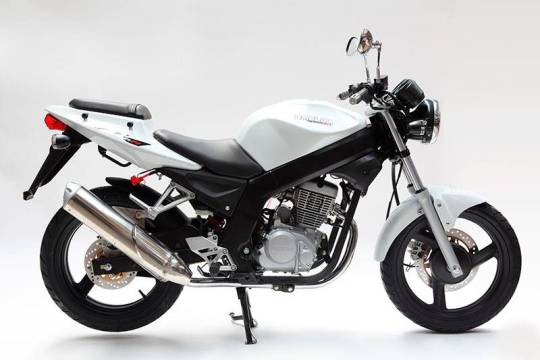
0 notes
Text
History of Kymco
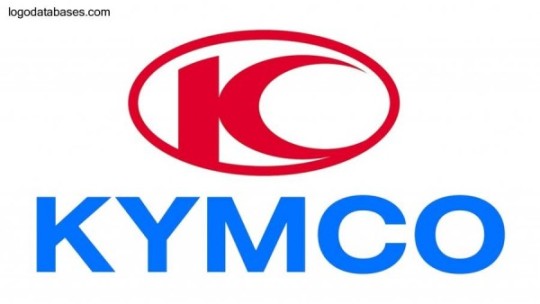
Initially Kymco produced motorcycle parts for Honda. In 1967 the Taiwanese manufacturer built its first plant. Kymco manufactured its first scooter in 1970. In 1977 the firm became the largest scooter manufacturer in Taiwan. It was not until 1992 that the company began marketing its products under the name Kymco.
An oil crisis that occurred in Taiwan during 1987 forced the government of that country to enact new legislation that prohibits the importation of 150cc motorcycles. This prohibition helped Kymco to boost its domination in the domestic market since it was mainly dedicated to developing lightweight models.
Two years later the firm began to build research and development centers. In 1991, Kymco invested in test fields to evaluate accurately the quality of its vehicles. In 1993, the company opened its third production facility in Lu Chu, Taiwan. At the beginning of the first decade of the 21st century, Kymco became the fifth largest scooter manufacturer in the world.
Despite having several years in business, most of the company's scooters and motorcycles were produced between 2004 and 2008. Some of their best known models of that time are: Kymco 125 Stryker, Agility, Dink, Maxxer, People , Venox 250, and Xciting.
The Kymco 125 Stryker motorcycle was manufactured in 2004, had a single-cylinder engine equipped with an air cooling system, 11.8 horsepower and 9,000 rpm. In addition, this model had front disc brakes and rear drum brakes and a 5-speed gearbox.
2004 Kymco Styker of the year 2004 2004 Kymco Styker of the year 2004 The Venox 250 is a Cruiser that was very famous in its launch. It was equipped with a single-cylinder engine capable of producing 27 horsepower and 10,500rpm. Just like the Kymco 125 had front disc brakes, rear drum brakes, and a 5-speed gearbox.
Cruiser model Venox 250 manufactured in 2005 Cruiser model Venox 250 manufactured in 2005 At the beginning of 2007 Kymco was chosen by the German manufacturer BMW to supply engines to its model G450 X Enduro motorcycle. That same year the Kymco Xciting went on the market.
Kymco Xciting of the year 2007 Kymco Xciting of the year 2007 At the end of 2013 Kymco collaborated with the Japanese firm Kawasaki to manufacture the J300 scooter based on the Kymco Downtown 300i.
Kymco downtown 300i Kymco Downtown 300i of the year 2013 Kymco established an independent production line in the United States based in South Carolina. The North American subsidiary Kymco launched 15 motorcycles and 9 all-terrain vehicles that registered moderate success in the local market.
The main Kymco factory is headquartered in Kaohsiung, Taiwan, has nearly 3,000 employees, and produces more than 570,000 vehicles per year. The company has production plants in Jakarta, Petaling Jaya, Shanghai, Changsha, and Chengdu.

0 notes
Text
DERBI

The DERBI starts in 1922, when Mr. Simeón Rabasa i Singla opened a small bicycle repair shop. The company grew rapidly and Don Simeon had to acquire new ships to cover the production of bicycles.
After the civil war, production continued to increase and the first contacts were established with some of the most important bicycle factories in the country, the result of which came to produce the chassis for mopeds and small motorcycles. Mr. Rabasa, whose objective was the construction of motorcycles, set up with his brother Josep and a group of small investors, the company BICICLETAS RABASA. After World War II, serial production of DERBI's first moped, the SRS, was started. It was the first of those built entirely by RABASA DERBI. To name it, the initials of Simeó Rabasa i Singla were adapted. It had a 48 c.c. engine, power 1.5 hp at 4,500 rpm., Two gears manually operated, front suspension by telescopic fork, drum brakes and reached 45 km / h. DECADE OF THE '50:
During the decade of the 50s, the success of the SRS was unquestionable and at the beginning of 1950 BICICLETAS RABASA became NACIONAL MOTOR S.A. At the Barcelona Trade Fair, a new model was presented: a motorcycle of 250 c.c. and 9 cv., called DERBI, contraction of the term DERIVED from BIcicleta.
The DERBI 250, was inspired by the Jawa 250, but with a number of own contributions such as the step of the pedal, the gear shift control on the right side, engine crank covers with ribs instead of smooth, the fork front more dimensioned and lights on the headlight to indicate the selected gear. The DERBI 250 was manufactured for just over 10 years, suffering in its life 3 important changes: 1952 - External changes due to its serial launch. 1956 - Super Model. Incorporation of flat stock. 1958 - Solutions of model 350 are adapted.
In 1951, DERBI had a staff of 30 employees and a production, between SRS and 250, of 150 units. A year later, in 1952, the number of employees amounted to 110 and the number of units produced to 800.
In 1953 the launch of a new model in 95cc (2T engine and 2 pistons with joint explosion chamber) and the introduction in a new sector took place: the delivery tricycle (with a model of 250 cc). That year, the production reaches 1,050 units, the workforce reaches 135 employees. In the following years, both the workforce and production increased: - 1954: Production 2,700 units, nº employees 170. - 1955: Presentation of the new 125 Super model. - 1956: Production 3,500 units, nº employees 245. - 1957: Production of 4,200 units, number of employees 280. Launch of the largest cylinder engine manufactured in series by DERBI, the bicilindric model 350 cc. The DERBI 350cc had a power of 16CV and reached 120km / h.
- 1958: Production 4,500 units, employees number 300.
THE 60S:
The entrance of the Seat 600 will produce a sharp drop in the sale of motorcycles of medium / higher displacement. In the year 1961, Nacional Motor (DERBI) concentrates its production in models of 49 cc, 65 cc and 75 cc. Two new models are presented at the Salon de Paris: DERBI 49 Sport and DERBI 49 Gran Sport 3 marches. The DERBI 49 Sport, was a cclomotor of 48.74 cc, 1.5 HP at 5000 rpm, 3 speeds, change to the foot, central drum brakes, front hydraulics suspension and swinging suspension. This moped would soon become the popular DERBI Torch, of which more than 500,000 units would be manufactured.
In 1963, some models were updated: 125 Tourism and 125 Super. This bike managed to be what it wanted, be the bike every day, a robust vehicle and low maintenance cost.
The year 1964 was marked by novelties. this year they presented:
- The DERBI 49 Junior: it meant an attempt to bring the moped to the Spanish girls. As Francisco Herreros said, "if you had to motorize a country, why not do it with women too?"
- The new DERBI 74 Gran Sport, which would be a myth for the brand. It was a light motorbike or a motor scooter, which was born with the idea of facilitating learning for young motorcycle enthusiasts. The engine was a true thoroughbred, designed for a sporty driving. It reached a maximum speed higher than 100 km / h. It was manufactured uninterrupted until well into the 70's. It would receive throughout its life a pair of updates .: In 1968, the electronic ignition and in 1969, the double removable cradle.
In 1965 the new Spanish legislation on mopeds came into force; which forces, to consider them as such, to have practicable pedals and do not exceed 40 km / h level. That same year the DERBI Torch 49 was born. At the end of the year the DERBI Antorcha 74 appeared, with the aim of increasing the range and volume without increasing the cost much.
In 1966 it was a year of great novelties: The 74 Trial Pyrenees was presented, which was manufactured in series the following year, with a gear change of 4V, it was a very robust motorcycle. It was presented as a normal tourism, although it is noted that athletes could also enjoy it, thanks to the 7cv to 5500rpm., Which allowed to roll at 100 km / h.
Between 1967 and 1968, the following were also presented: - SCOTMATIC: The particularity of this model was that a scooter body met the right conditions to be cataloged as a moped, and therefore did not need a driver's license. - DERBIMATIC E: The totally classic line of the mopeds of tourism with the automatism, thus thinking about the public of the city. This was a concept that was advanced to the time in which it was introduced.
- DERBIMATIC TORCH In 1969, production increased to 140 units / day and the workforce reached 450 employees. Exports started in France, Morocco, Belgium, Germany, Switzerland, England, USA, Holland, Australia, Sweden, Denmark, Algeria, Thailand and Guatemala. From here, until 1977 the Variant will appear, efforts were concentrated on the aesthetic evolutions of details and equipment. Also they appeared true novelties: Torch Super 49, that will replace the Torch, and a great variety of Torches, whose main variations affect to the body, different deposit, a fairing on the motor, totally watertight rear chain and back springs to the air and chromed : - Normal - Special - Super - Champion - Super champion - Special Champion - Super Special - GT-4V - GTS-4V - Campona Olympic - Olympic Champion E - Olympic Runner-up - Special Olympic - Extra Special Olympic - Special Olympic Super - Olympic Super DECADE OF 70'S: In 1971 the main novelty was DERBI Coyote 49 and 75. Only the 50 version would reach the series. The Coyote 49 Y 75, meant the return to the sector of the mountain bike. The press of the time highlighted the good skills to perform both in all terrain and in trial.
In the Salon de Bcn in 1972, a 50 c.c. Carreras Cliente, with the aim of training new pilots. This motorcycle had 15.5 hp at 15,000 rpm., Air cooling, 6 speeds, reached a maximum speed of 165 km / h, feeding by Irz 24 mm harness and rotary valve, Mahle piston, electronic ignition Motoplat, primary transmission by gears with shock absorber in the engine pinion, light alloy cylinder jacketed, tank and fairing in fiberglass, and aluminum rims ... "a true racing machine for the modest price of 35,000 pesetas".
A year later, 1973, appeared the evolution of DERBI Coyote 49, the Coyote Super that incorporated reinforced suspensions more suitable for mountain roads. And also the Road Runner appeared, which was a smaller Coyote.
In 1974, the change to 4 speeds in mopeds was introduced. In 1975, two important novelties were introduced: - The Cross 50: It was a mountain moped with elements common to the Coyote. - The 2,002 Grand Prix: It was presented at the Barcelona Motor Show, in economic, GT and Sports versions. It was a bi-cylindrical motorcycle with electronic ignition, 6-speed gearbox, powers between 23 and 26 hp, initially thought of as 125 c.c. to sell it in European countries and especially in France. He took his displacement to the maximum, getting 187.5 c.c.
In 1976, a deluxe version appeared, the Cross 50 Super, with new finish and intermittent. The DERBI Diablo 49 cc, 4 speeds. The Cross 74 exhibits the Cross 74, a replica of the bike that won the Cross 75 Junior Trophy in Spain last year. The 2002 Gran Prix Deportiva version is marketed. It is announced that the sale of the GT version will begin shortly.
The 2002 GT was a more evolved version, with electric start, double front brake disc, separate lubrication, steering damper, oil / gas type rear shock absorbers, a small front fairing, 26 hp at 8000 rpm and a maximum speed of 150 km / h.
The crisis that the sector suffered in 1977 made disappear mythical brands such as Bultaco, Mototrans and OSSA. Abelló was absorbed by Suzuki, Montesa by Honda and Sanglas by Yamaha. DERBI managed to resist. That same year, DERBI presented the 2002 Gra versions nd Prix Gran Turismo y Economica. And the world saw the birth of the mythical VARIANT, which was presented at the Bcn Hall as the new DERBI moped for the 80s.
In 1978 the DERBI Diablo Super C4 appeared, as evolution of the C4 Devil of the previous year. What distinguished it most was the new engine, the first step to replace the old engines of Sachs origin and modernize the entire range.
In the 1979 Bcn Show, the Cross 74 customer was presented, the new replica version of the official motorcycle of the previous year. Another novelty of that year was that DERBI manufactured for the first time all-terrain bikes in series: 74 TT and TT- C6 THE 80'S:
The 1980 range was presented at the Paris Motor Show: - Diablo 80 CX5 (European displacement)
- Variant Caballero, a Variant with a motorcycle shape
- Sport Coppa 80 (c.c. European)
- 125 Cross The divergence of legislations in displacements made that in Spain these models were born with new names: - 1001-74 (Sport Coppa)
- Sport Coppa 50: a moped of modern and beautiful lines, with an output of 2.85 hp at 8,000 rpm. and a maximum speed limited to 40 km / h to comply with Spanish legislation. An important milestone in the history of the Variant was the appearance of the Red Variant this year, which incorporated a differential element to its competitors: the Spacetronic electric start-up developed by DERBI from space technology. In 1981, two new models for the field were presented for the Spanish market: - The CX Jumbo, with a new engine of 49 c.c. and 4 gears. - The TT 8, an all-terrain motorcycle suitable for all, easily convertible into 125, thanks to a cylinder head kit that DERBI supplied. - The Sport Coppa 125, with 6 gears. - The TTS 9, a 125 all-terrain / trail according to the tendencies of the all-terrain towards the creation of motorcycles easier to take in the displacements of the mountain without being totally of competition. - The T-250 / 6V, a motorcycle of 250 c.c., with tourist tendencies more than sports. It was the largest displacement motorcycle in the range. Another novelty of autumn of that year was Sport Coppa 74, which came to replace the previous 1001.
In 1982, the new DERBI engine appeared for series models, with a new cylinder that allowed covering from 50 to 80 c.c. The change was also completely redesigned to be able to mount 4.5 or 6 speeds, according to the legislation of each country. The new models of that year were: - Europe 75 RD, an all terrain motorcycle. - The Yumbo Super 50, a reproduction of the Europe 75 RD on a smaller scale, but being a true motorcycle despite its small displacement. - The SCOOT, which was presented in September at the Paris show, taking advantage of the fact that in France the legislation did not require pedals on mopeds. The SCOOT had an engine derived from the Variant but with a displacement 75 (80 c.c. for Europe), electric start, monocoque steel chassis, classic bike-type suspensions and dashboard with fuel level and econometer. In 1983 it was marked by the arrival of Japanese brands. A year later, 1984, DERBI celebrated its 60th Anniversary. The main novelties were: - Variant Start. - Yumbo Super FD: change of colors and technical modifications, new cylinder and cylinder head, disc brake on the front wheel, new swingarm and suspensions of the Ideal brand. In 1985, the Scoot 50 was presented in Spain, already seen in the Paris Motor Show, but with pedals that could be used, and that would be sold under the name DS 50. In Salon Bcn, the FDT, the tourism version of the FD, was announced. and in the Salon of Milan presented Variant Sport, with a new image, new tires of 16 "and new exhaust. In 1986, the main novelties were: - Coppa FT: This is the known FDT but without the disc brake, the rear monoshock. - FDS: an evolution of the FD for the use outside the asphalt. It had an engine of admission by direct sheets and multitransfer cylinder treated with scanimet, brake of hydraulic disk and hydraulic suspension with tilting of great section.
In 1978 the DERBI Diablo Super C4 appeared, as evolution of the C4 Devil of the previous year. What distinguished it most was the new engine, the first step to replace the old engines of Sachs origin and modernize the entire range.
In the 1979 Bcn Show, the Cross 74 customer was presented, the new replica version of the official motorcycle of the previous year. Another novelty of that year was that DERBI manufactured for the first time all-terrain bikes in series: 74 TT and TT- C6 THE 80'S:
The 1980 range was presented at the Paris Motor Show: - Diablo 80 CX5 (European displacement)
- Variant Caballero, a Variant with a motorcycle shape
- Sport Coppa 80 (c.c. European)
- 125 Cross The divergence of legislations in displacements made that in Spain these models were born with new names: - 1001-74 (Sport Coppa)
- Sport Coppa 50: a moped of modern and beautiful lines, with an output of 2.85 hp at 8,000 rpm. and a maximum speed limited to 40 km / h to comply with Spanish legislation. An important milestone in the history of the Variant was the appearance of the Red Variant this year, which incorporated a differential element to its competitors: the Spacetronic electric start-up developed by DERBI from space technology. In 1981, two new models for the field were presented for the Spanish market: - The CX Jumbo, with a new engine of 49 c.c. and 4 gears. - The TT 8, an all-terrain motorcycle suitable for all, easily convertible into 125, thanks to a cylinder head kit that DERBI supplied. - The Sport Coppa 125, with 6 gears. - The TTS 9, a 125 all-terrain / trail according to the tendencies of the all-terrain towards the creation of motorcycles easier to take in the displacements of the mountain without being totally of competition. - The T-250 / 6V, a motorcycle of 250 c.c., with tourist tendencies more than sports. It was the largest displacement motorcycle in the range. Another novelty of autumn of that year was Sport Coppa 74, which came to replace the previous 1001.
In 1982, the new DERBI engine appeared for series models, with a new cylinder that allowed covering from 50 to 80 c.c. The change was also completely redesigned to be able to mount 4.5 or 6 speeds, according to the legislation of each country. The new models of that year were: - Europe 75 RD, an all terrain motorcycle. - The Yumbo Super 50, a reproduction of the Europe 75 RD on a smaller scale, but being a true motorcycle despite its small displacement. - The SCOOT, which was presented in September at the Paris show, taking advantage of the fact that in France the legislation did not require pedals on mopeds. The SCOOT had an engine derived from the Variant but with a displacement 75 (80 c.c. for Europe), electric start, monocoque steel chassis, classic bike-type suspensions and dashboard with fuel level and econometer. In 1983 it was marked by the arrival of Japanese brands. A year later, 1984, DERBI celebrated its 60th Anniversary. The main novelties were: - Variant Start. - Yumbo Super FD: change of colors and technical modifications, new cylinder and cylinder head, disc brake on the front wheel, new swingarm and suspensions of the Ideal brand. In 1985, the Scoot 50 was presented in Spain, already seen in the Paris Motor Show, but with pedals that could be used, and that would be sold under the name DS 50. In Salon Bcn, the FDT, the tourism version of the FD, was announced. and in the Salon of Milan presented Variant Sport, with a new image, new tires of 16 "and new exhaust. In 1986, the main novelties were: - Coppa FT: This is the known FDT but without the disc brake, the rear monoshock. - FDS: an evolution of the FD for the use outside the asphalt. It had an engine of admission by direct sheets and multitransfer cylinder treated with scanimet, brake of hydraulic disk and hydraulic suspension with tilting of great section.
0 notes
Text
KTM
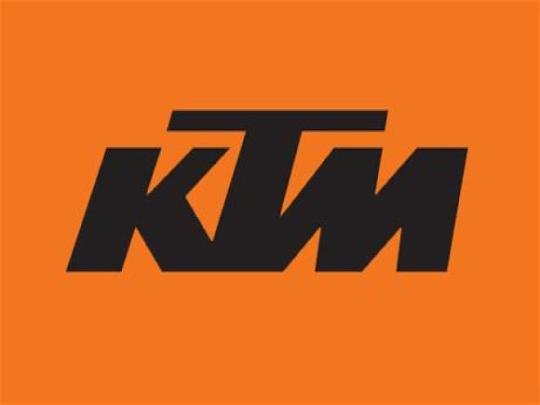
The company was founded in 1934 by Hans Trunkenpolz in Mattighofen as a metallurgical company called Kraftfahrzeug Trunkenpolz Mattighofen. After World War II, Trunkenpolz began to consider manufacturing its own motorcycles and the first prototype was finalized in 1953. Series production began in 1954, with its own production of all but the engines supplied by Rotax. With only 20 employees, the initial production was 3 units a day.

In 1955, businessman Ernst Kronreif joined the company as a partner and bought a large part of the company. He renamed the company as Kronreif & Trunkenpolz Mattighofen. KTM launched the first moped called Mecky in 1957, the Ponny in 1960 and the Ponny II in 1962.
Kronreif died in 1960 and Tunkenpolz two years later, victim of a heart attack. The company's name changed again to Krafträder Trunkenpolz Mattighofen with his son Erich managing the company until his death in 1989. At that time the company had 180 employees and a turnover of 3.5 million euros.
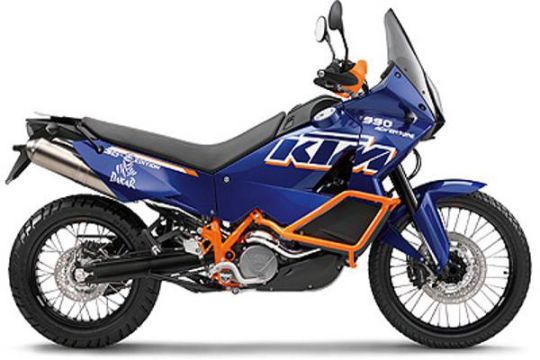
In 1978, the North American subsidiary KTM North America Inc. was founded in Lorain, Ohio. International trade increased the company's turnover by 72%. In 1980, it was renamed as KTM Motor-Fahrzeugbau KG.
In 1988, revenue from scooters and mopeds sank rapidly and production was paralyzed. In 1991, KTM was triggered by insolvency and started to be managed by creditor banks that divided it into four parts: KTM Sportmotorcycles GmbH (now KTM-Sportmotorcycle AG), specializing in off-road motorcycles; KTM Fahrrad GmbH, producing bicycles; KTM Kühler GmbH, which has been producing cooling systems for cars and motorcycles since 1984; KTM Werkzeugbau GmbH, which was eventually absorbed by KTM Sportmotorcycles.
Since 1990, motorcycle design has been run by KiskaDesign, a Salzburg-based company. She is responsible for the entire KTM brand, including vehicles, shops, stands and printed materials.
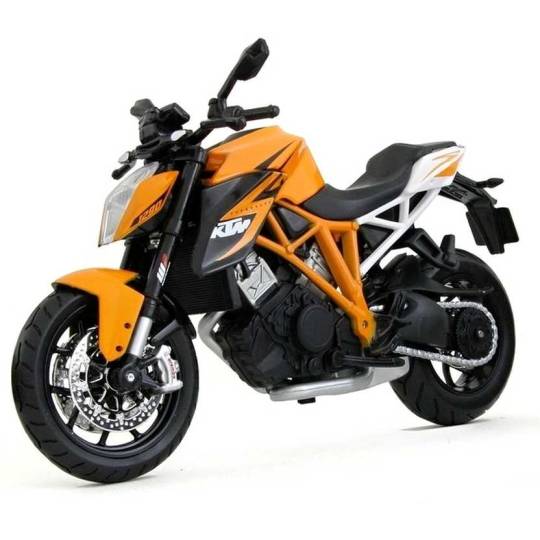
As of 2005, KTM Sportmotocycles AG delivered 80,000 bikes worldwide beginning a partnership with Polaris Industries. Such an agreement should last for two years, when both companies would merge into just one. But in 2006, KTM announced that the deal had been undone prematurely and would continue only to supply 450cc 510cc engines to the ATV manufacturer. In 2007, India's Bajaj Auto acquired 14.5% of KTM Power Sports AG. Both signed a cooperation agreement, where KTm would provide know-how for the development of 125cc and 200cc water-cooled engines, while Bajaj would support the distribution of KTM products in India and Southeast Asia. In December 2007, Bajaj increased its stake to 20%; in 2010 to 38% and in 2012, Bajaj accounted for 47% of KTM's share capital.
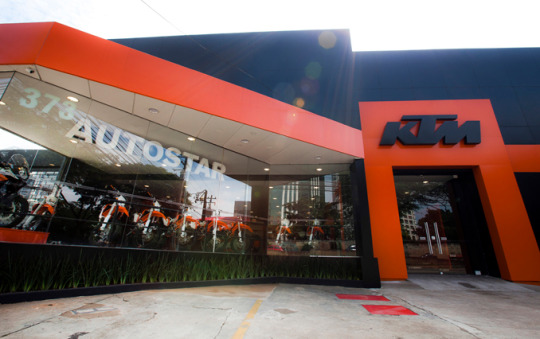
0 notes
Text
MV Agusta
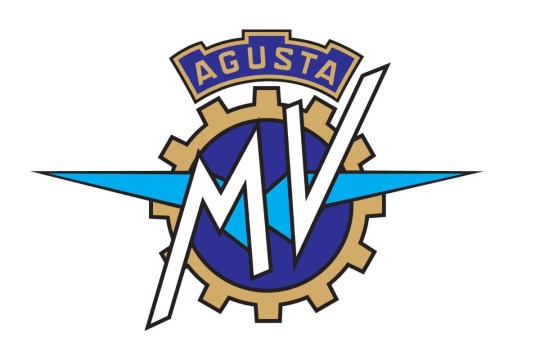
MV Agusta is an Italian motorcycle manufacturer founded in 1945 in Cascina Costa, near Milan.
MV Agusta represents the romantic history of Italian motorcycling, based on passion, success in motorsport and performance of the most extreme models. It is the most exclusive brand in the motorcycle industry worldwide.
The company began with a deployment of Agusta, a company that was formed by Count Giovanni Agusta in 1923. The Count died in 1927, leaving the company in the hands of his wife and children, Domenico, Vincenzo, Mario and Corrado. Vicenzo Agusta, together with his brother Domenico, formed the MV Agusta (Meccanica Verghera). By the end of World War II, as a means to save the workers' jobs, and also to fill the need for cheap post-war, they began to produce the first prototypes. The first to be produced was the "Vespa 98", so called ironically.
Cagiva bought the name brands MV Agusta, and in 1997 she launched the first MV Agusta bike. The new bikes were 750cc four-cylinder sports cars (the F4 range), which included a limited series of production, just like all PRE-painted ("Special Racing Production") work models, which movie "I, Robot". In 2004, it introduced its first 1000 cc motorcycle. In 2004 marked the end of production for the approximately 750 sports machines, with the limited production of 300 RE ("Special Racing") in the traditional model red and silver livery.
MV Agusta also made a limited number of issues of 750 cc F4 and F4 1000 cc "Ayrton Senna" in memory of the late Formula One champion who was an avid collector Ducati and MV Agusta. The income was reverted to the Ayrton Senna Institute. 300 models of each were made in the early 2000s.
They also produce a range of 750 and 910 "naked" bikes called Brutale. Production is somewhat limited, as is the company's policy to produce an elite machine similar to Ferrari in automobiles. They do not compete directly with Japanese manufacturers, whose motorcycles sold typically cost considerably less than an MV Agusta. Instead they compete with other models such as the Ducati Italian sports models, 996,998, 999, 1098, and the Monster Ducati.
In 2005, MV Agusta introduced the Tamburini 1000, which is a tribute to its creator, Massimo Tamburini, who previously worked for Moto Guzzi, and most recently Ducati. The MV Agusta F4 refined the innovative design of the 916. In recent publications, the MV Agusta has been highly praised as one of the best handcrafted motorcycle ever created.
In 1999 the Cagiva group was restructured for strategic purposes and MV Agusta becomes the leading brand which includes Cagiva and Husqvarna. In July 2007, Husqvarna was sold to the BMW Motorcycle division.
Now these machines will be produced in Brazilian soil, in partnership with the Dafra Motos factory in Manaus. MV Agusta is setting up its dealer network in the main cities of Brazil.
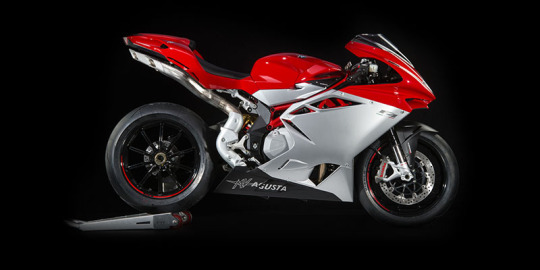
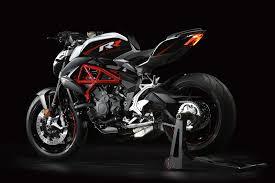
0 notes
Text
Royal Enfield
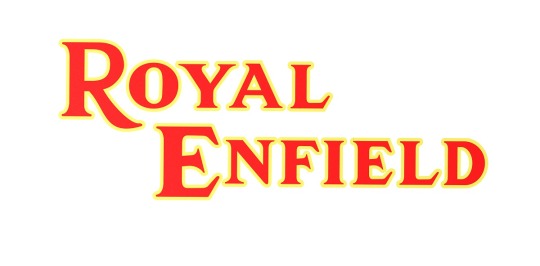
The company Enfield Manufacturing Co.Ltd. of Reddicth, near Birmingham, began in 1893 selling the Enfield brand bicycles manufactured by the Eadie Company until in 1896 it bought Eadie and began to produce its own bikes taking advantage of the sales boom of this type of vehicles.
At this time he adopted the famous slogan "Made Like a Gun" because Eadie also made parts for the not less famous Enfield rifles.
With the advent of gasoline engines, he developed his first motor vehicle: a tricycle with De-Dion engine manufactured in 1899 that went on line until 1903.
In 1901 he launched his first motorcycle using a Belgian Minerva 211cc engine (as well as Triumph and BSA) and installing it on the front wheel.
In 1910 it acquired MAG engines with 2-cylinder V-engines with 350cc, 2-stroke 225cc engines and 1000cc V-twin cylinders to complete its model range. A few days later came the renowned British JAP engines with displacement ranging from 248 to 498cc.
From 1925 they launched models with lateral engines of the own Royal Enfield, of 346cc and 488cc and one of 976cc besides a 346cc ohv.
They continued to develop their range of engines and over the next decade or so they used 225cc, 498cc, ohv and 996cc v.twins, plus 346,570, and 976cc s.v. models plus 248,346 and 499cc ohv. (Bullet) singles, and an 1140cc v.twin.
In 1922 it launched the model 201 with 125cc engine, 2 times, piston diameter 64 mm and stroke 70 mm with 2.25hp that had great success and stayed in line until 1928.
Enfield was the pioneer in adopting the current in the secondary transmission and the dry crankcase. At the time its use of exchange in the foot was considered a visionary idea. In 1933, the first Bullet model was born for a line of 250, 350 and 500 cc motorcycles with four stroke single cylinder engines.
After the war ended in 1945, he launched new models including the 125cc 2-stroke Prince, installing the first telescopic forks, as demonstrated by the revitalized "J" and "G" models originally launched in 1936.
In 1948 the Royal Enfield launches a soft, comfortable twin-engine 500cc engine, a Roadster model.
In 1949 the company introduced a 350cc single-cylinder Bullet, one of the first motorcycles to incorporate the rear balance, which together with its sturdy engine allowed it to win several competitions including of trail. In 1950 the model was released in 500cc that was winner in hundreds of competitions. This success gave worldwide fame to the Bullet model.
In the same year a 500cc twin was launched to meet the fad of these engines, which was in line until 1958, when it was replaced by the Meteor Minor which in turn was in line until 1963.
In 1952 the twin-cylinder 500cc engine was extended to 700cc in the Meteor model, which was the largest twin-cylinder parallel on the market. It went out of the line in 1958 to the entrance of Constellation with an innovative air cooling system.
In 1954 the Government of India needed a sturdy motorcycle for military use, from the police and for inspection of its borders and imported 400 motorcycles from England. From the field success, similar applications were placed for delivery in 1955 and 1956. For the quantities under consideration it was worth establishing a factory in India. Madras Motors was found as a local partner and in 1955 it was established at Enfield India Ltd. and technicians were sent for training in Reddicth. In that same year motorcycles were shipped disassembled from England to local assembly. In 1956 the Bullet was already manufactured in its entirety in the new factory of Madras.
In 1994 Enfield India was bought by the Eicher group, which inaugurated in 1999 a new plant in Jaipur equipped with state-of-the-art machines. Today, around 10,000 units of this same model in 350cc and 500c are manufactured annually in Madras and are even exported to 20 different countries. This model is characterized by reliability, simplicity in construction and fuel economy. In 1995 Brazil imported a container with 22 of these motorcycles.
The biggest and best of the twin-cylinders was the Interceptor, which was launched in 1962 with 750cc and 53 horses. Built in part to meet American market demand, the Interceptor combined torque, speed and smoothness in running.
In the mid-1960s Royal Enfield suffered a series of financial problems, the production of the Interceptor, was moved briefly to the west of England, the factory after several rescue attempts to close its activities in 1971. Activities in India continued.
0 notes
Text
DAFRA MOTOS
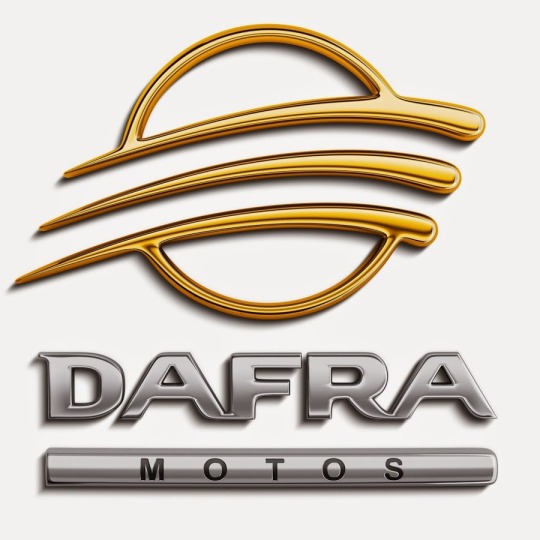
Dafra Motos is a Brazilian motorcycle manufacturer, belonging to the Itavema Group, which debuts on the market in 2008. The company focuses on the production of motorcycles up to 250cc, with affordable price and financing. Under the command of President Creso Franco, Dafra begins its activity at a time when motorcycle sales are breaking records in Brazil.
At the beginning of production, its components were mostly imported from China, but after breaking partnerships with suppliers, Dafra sought new partners, today Dafra bikes from Amazonia is partnered with TVS Motors Company of India (third largest manufacturer of motorcycles in India), Haojue (manufacturer of Suzuki bikes in china), BMW Motorrad, MV Agusta and SYM, seeking to improve their products.
Dafra makes global partnerships to meet the demand of the Brazilian market. The bikes are being developed in Brazil and in Europe. The adaptations to "EURO 3", mandated as of 2009, are made from technology from US electronic injection companies and from European companies to develop pollutant emission control equipment. And most of the parts used in the assembly line in Manaus are manufactured in China. It is due to this global combination that Dafra Motos meets the conditions to offer quality products at attractive prices for the Brazilian market.
Dafra's history began in 2006, when the Itavema Group began to study the feasibility of expanding its range of investments. With extensive know-how in the distribution of vehicles and solid financial formation, the group saw in the motorcycle assembly segment a chance to expand its businesses - which at that time already had ventures in the logistics, services and plastic industries - of consistent manner.
The investment for the costs of product development, fixed assets, acquisition of parts and tools, development of the turning mark in Dafra was of the order of R $ 100 million. Most of this contribution went to the construction of a factory in Manaus, which already has 100 thousand square meters of territory and more than 300 employees in the assembly line.
The Dafra operation was structured throughout 2007. Four engine and motorcycle production lines were started in December, which doubles until March 2008. Imported from China in CKD (Completely Knocked Down) lots, which enable assembly, the models were tested by the automaker's technicians during the last year, so that they could choose the ones that best fit the Brazilian conditions.
The company seeks continuous and sustainable growth and, to this end, will invest in expanding the factory's production capacity, consolidating the brand and developing new products that adapt to the preference of consumers in different regions of the country. Currently, the motorcycle market is going through a very expressive moment of growth, breaking sales records and billing. It is estimated that there are 8.4 million bikes in circulation in Brazil and that the market will double by 2012.
The targets of Dafra are composed of: employees, with monthly income between R $ 500.00 and R $ 2,000.00, who use the motorcycle as a means of transportation replacing the public service; young people who intend to use motorcycles as a means of transport; people who use the motorcycle as a working tool (urban deliveries, fleets, surveillance etc); market niches of classes A and B, for some specific models; and people in search of leisure.
Once selected according to their degree of suitability to the conditions of Brazilian traffic, Dafra models still underwent a complete process of parts and components development, begun in February 2007.
Approximately 93% of Dafra motorcycle parts are manufactured in China. The automaker has long-term agreements with three Asian suppliers - Loncin, Lifan and Zongshen - which are among the world's largest motorcycle manufacturers. The assembly of the Dafra bikes follows what is established in the basic production process (PPB).
Initially, four models of motorcycles will be produced and marketed. Dafra enters the market with a portfolio of products in quantity and quality comparable to the leaders of the sector. But the average price, due to high technology and low production costs, is R $ 4,600, about 20% to 30% cheaper than its main competitors. In May a fifth model will hit the market.

0 notes
Text
BUELL
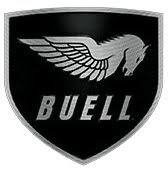
The story
It all started when engineer and racing driver Erik Buell, who had worked for four years in traditional Harley-Davidson, decided to leave the company in 1983 to realize a great dream: to build a racing motorcycle that could duel with imported bikes , especially Japanese and Italian. He then founded the Buell Motorcycle Company in East Troy, Wisconsin. The first motorcycle produced by the company, the BUELL RW 750, with two-stroke four-cylinder and 750cc engine, was specially developed to compete in the AMA (American Motorcycle Association) Formula 1 class. It was a motorcycle with exceptional cornering performance, a feature that has become one of the brand's strengths to this day. - - However, with the extinction of this category and the regulation of the Superbike Championship for 1986, he started to develop a new model, the RR 1000, which used a Harley XR 1000 engine. He produced 50 units until the engines were finished ; then went on to use the Harley 1200, producing an additional 65 bikes. Following the RR 1200 came the two-seater RS 1200 in 1989 and the RSS 1200 in 1992. At this point BUELL bikes attracted fans' attention to performance and speed. - - Started a successful partnership with Harley-Davidson in 1993 when the company bought 49% of its shares; being incorporated definitively in 1998. In this period BUELL can benefit from all technology and knowledge of the centennial brand. The vocation to innovate of all BUELL models was built around a philosophy: the Trilogy of Technology. The precept consists of three rules for the manufacture of the bikes: frame stiffness, mass centralization and low weight. In other words, the rigid chassis reduces the flexibility of the motorcycle and increases its stability, especially on uneven floors. Another point is to limit the weight of all components not supported by springs as far as possible. This allows the tires to maintain constant contact with the floor. The lower non-suspended mass also results in greater agility, ensures traction all the time, which translates into performance, stability and safety. - - BUELL is also known for developing innovative solutions such as the Zero Torsion Load (ZTL) brake, a system in which the brake disc is fixed to the outside of the front wheel in the rim rather than the central hub as in existing bikes in the market. This process prevents twisting from twisting the disc and thus provides safer braking. The result is a three-kilogram reduction on the front of the motorcycle. Aimed at the young public aged between 25 and 35 years, the brand arrived in Brazil at the hands of the Izzo Group. The company chose the location where the first exclusive dealership (Buell Concept Store) was installed in the country in October 2005: Oscar Freire Street. It is not only in motorized two-wheelers that BUELL spreads its name. The automaker is also engaged in the accessories sector and recently brought to Brazil a new line of helmets. In November 2006, BUELL built the 100,000th motorcycle since its foundation. On October 30, 2009, BUELL, which was characterized by innovative solutions, such as the tank integrated into the frame and large perimeter brake discs, ended its activities. Not even the high quality of its products saved the brand. This is because its owner, Harley-Davidson, is experiencing a delicate moment with a huge drop in sales. The dealership network will be maintained at a first moment, as will the manufacture of spare parts. It remains to be seen whether the closure is final, as Harley-Davidson continues to own the brand. - - The machines All BUELL motorcycles have mass centering (low center of gravity, even with exhaust directed to the underside of the motorcycle); fuel tank integrated into the chassis and oil tank integrated into the rear balance (that is, gasoline is stored and circulates inside the frame of the motorcycle and oil in the cavities of the rear suspension); front brake with 6 piston caliper (in addition to the brake disc being inverted and accompanying the wheel rim); and Showa front suspension type Upside Down. Its line is composed by models like: ● BUELL 1125 R: Launched in 2008 to commemorate the company's 25th anniversary, it has come up to break some standards: unprecedented engine made by the Austrian Rotax, with liquid cooling, replacing the already traditional Harley-Davidson propellers that were equipping the whole line BUELL over the years. The super-sport bike is the most powerful bike ever developed by the company.
● BUELL City Cross: a motorcycle that stands out for the reduced wheelbase, which is only 132 centimeters, equipped with 984 cc engine, which yields 92 cc of power. The look translates the name of the bike, which through the riding position privileges the driveability and comfort. There is no croup. ● BUELL Lightning XB12S: Compact motorcycle equipped with 1,200cc electronic injection Thunderstorm engine, which combines brute force with minimalist design providing excellent drivability, especially in corners. On this motorcycle, what strikes the same is the rectangular section frame that "hugs" the fake tank and engine. In addition to the tank cover, elaborated on some models with translucent material. The bike features vivid colors that convey air of joviality (Translucent Orange, Black or Translucent Red). The unusual look of this BUELL is completed by the dual headlamp (one for low light and one for high light) and six-spoke alloy wheels. The exhaust under the engine is another highlight, not only aesthetic, but also helps in mass concentration. ● BUELL Lightning XB9XSX: motorcycle with two-cylinder V-engine, 984cm³ displacement, weighing only 177kg dry and with a wheelbase of 1,320mm, is an extremely agile and fun driver to ride. This characteristic yielded to the model the title of streetfighter, or urban warrior, since it is able to dribble the traffic and to give good starts. - - ● BUELL Lightning Super XB12STT: The kilometer-long extension of the name, an endless mix of denominations, letters and numbers, is to designate that the newest member of the Lightning family incorporates sporting characteristics into a street bike. A fusion of styles, between the off-road, the supermotard and the street fighter (urban warrior). Off the road, Super TT inherited the crossbar bar, which is a reinforcing bar, in addition to the wrist guards. On the sides, sports characteristics, with adoption of finish numbers port, as in competition bikes. Even visual adopted in the mini-fairing on the lighthouse. The tall, flat 798mm high bench allows for off-road driving, but also makes it easier to ride supermotard or street fighter on the asphalt. ● BUELL Ulysses XB12X: motorcycle that stands out from the rest of the BUELL line for the muscular big trail look, with a dash of supermotard - 17 "rim wheels and more sporty profile tires. Sturdy, it impresses with its aesthetics, especially the set formed by the wide frame and scale, which "embrace" the mechanical and cycling parts. The bike also has a long suspension, wide seat, hand guards, exhaust under the engine and a functional triple tail, which serves as backrest for the rump or luggage rack. Despite its visual characteristics, this sport adventure was not made for large displacements on earth. ● BUELL Ulysses XB12XT: big adventure motorcycle, classified as Adventure, to face great trips more focused on tourism and asphalt. This model gained aerodynamic refinement, with the adoption of a larger and detachable windscreen, in addition to heated handles, to rotate at night, or in winter, with two temperature settings. In order to carry all the necessary luggage in the trips, a kit (standard equipment) was developed, consisting of side pockets and a central bauleto, which also serves as support for the passenger's back. The bauleto and bags are rigid, removable, keyed and waterproof. The bike also features 12V power outlets for connecting external devices such as GPS navigation system, cell phone charger or other necessities.
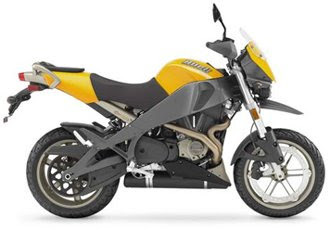
0 notes
Text
PIAGGIO
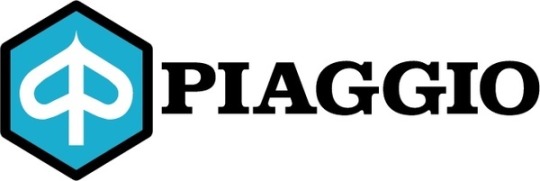
1884-1903
Piaggio was founded in Sestri Ponente in the industrial suburb of Genoa in 1884, next to shipyards Odero and quickly became the most sought after fittings ship company. Rinaldo Piaggio (1864-1938), is only 20 years old when October 10, 1884 signed the act establishing the Rinaldo Piaggio Company. After three years of operation, September 14, 1887 transformed the company Rinaldo Piaggio & C., a limited partnership in which he is personally responsible and the other shareholders have a sculptor (Pietro Costa), an owner (Giuseppe Piaggio) and a " landowner "(Giacomo Pastorino). Rinaldo is the son of Henry, a small local merchant who owned a lumber sawmill, classified in 1882 as "steam" and, as such, among the most modern mechanized plants in Genoa. The factory expands and cabinetmakers furnish the finest Italian and foreign ships of the century. It is a very special moment in the history of Italy: our country is passing through the industrial development stage, short of the main European nations, but with the potential to recover. Open new spaces for those who have skills and resourcefulness, qualities of which is definitely not without Rinaldo Piaggio, liquidated the first members, continues his adventure alone engage in the railway construction sector, namely in the field, then more innovative and great prospects growth. The Sestri facilities are insufficient for the dynamism of Rinaldo Piaggio. In 1901, the procedures for the acquisition of a factory in Finale Ligure and 1903 made all the steps for its definitive acquisition.
1903-1924 The company's growth in the shipbuilding, railroad sector was consolidated in the first decade of the twentieth century. The Great War raises demand for the construction of traditional means of transport, such as ships and trains, and at the same time opens a revolutionary new frontier: the Air Force. Rinaldo not unprepared: in 1915, the specialist carpenters of Sestri and Finale engage in the construction of wings and naceles of new airplanes. 1917, the date that marks the entrance of Piaggio decided in the aeronautical sector. Looking for new spaces, Rinaldo, detects aviation company of Pisa. Thus began the liquidation of Piaggio in Tuscany and opens a new page in the history of the company and in the history of a region particularly significant for civilization, culture and economic society in Italy and worldwide. In those years Pisa is home to one of the first airports in Italy ("Golden Arthur"); Here was born the Antoni Shipping Company (named after the aircraft manufacturers Fratelli Antoni), here comes the anonymity Empresa Aeronáutica Construções, then CMASA, originated by a group of Piedmont businessmen - including Giovanni Agnelli - Liguria and Tuscany and Vice President Rinaldo Piaggio for many years. Piaggio has three positions and was considered one of the large national companies by size, number of employees, production volume and sales value. The end of World War I had an effect on economic development and the years of the conversion of a war economy to peace appear throughout its drama. The Piaggio does not seem particularly affected or at least is much lower grade than other companies in the mechanical sector. Diversification of production in different sectors of mobility puts Piaggio's commitment sheltered post-war heavy crisis, but the uncertainty of the moment convinces Rinaldo to seek a financially sound partner with strong expertise in finance and business management. In 1920 the company Piaggio & Companion (where since 1895 the "Companion" was Nicholas Odera) is dissolved and formed the Societa Anonima Piaggio & C., with his appointment as president of the new member Attilio Odero, star of greatness among the leaders 'industrial and financial success of our country. In the railway sector, new significant milestones are quickly achieved: follow every large order from the domestic market and the foreign market, including the actual train built in the early 1920s and included the construction of a "futuristic" electromotive design and special welding steel , the result of Piaggio research and patents. They are febrile years in a country torn by the consequences of war and living in a complex political, economic and social climate. Rinaldo and Attilio Odero record a new phase of expansion as the pursuit of the best technicians of the moment and the modernization of the systems of Liguria and Tuscany for the aerospace, railway and equipping vessels. In 1923, she acquired new aircraft technicians, among them Giovanni Pegna, an aeronautical engineer, partners at Pegna - Bonmartini. Negotiations with Pegna were long and Bonmartini willing to cede the man-made aircraft at their factories. engines of Rinaldo and the difficulty of the negotiations at some point of the dive and buy for the melody of a thousand seven hundred thousand lire of the whole Bonmartini installation, with everything in it, including technicians, workers and work stations (swallow-type equipment). The goal of acquiring Pegna's abilities is achieved and the first tangible result is the production of P2 fighter monoplane (Piaggio 2), aircraft starting a long period of production in subsequent achievements with peaks of excellence such as by P7 - Piaggio seaplane racing - and the four-engine P 108, the last major aircraft of the Italian manufacturers before the Second World War.
1924-1934
trends and expectations of the new production company had, however, persuaded Rinaldo to look at the new facilities. Rinaldo sees the opportunity to build aircraft engines and in 1924 bought the Pontedera factory national mechanical engineering, small workshop that had emerged before the war from the engine section of the local agricultural consortium. In one still strongly dependent on agriculture in the region, that is, the businessman from Liguria caused the first major transformation of the area and start production of Jupiter engines under license from Gnome et Rone, a license acquired for 1 million lire. Rinaldo is now one of the few Italians in the aviation sector, he is the protagonist, and in 1926, along with a few other aviation pioneers, he founded SANA, a company that promotes the first Italian airline to carry passengers. The acquisition of the Pontedera plant is an extremely significant step in the history of Piaggio and represents a new consolidation of the company. On March 9, 1925 Rinaldo - with the intention of optimizing the investments only turned around and expand his activities in buildings by cars - works to create a new company with Mario Tolomei in Florence for the construction engines Cars Of Dion Bouton and Jupiter. Its action is given by the value of the factory in Pontedera, in writing, to register 3 million lire. The project is ambitious, but the agreement does not end with Ptolomeus and Pontedera remained as a center for the production of aircraft engines, where in a few years that great new engineers, among them Corradino D'Ascanio. Piaggio in 1924 has its plants in Sestri Ponente, Finalmarina, Pisa and Pontedera, which owns and manages forestry companies in Maremma (Montalto di Castro, Santa Barbara, St. Augustine) and Rome (Sezze Romano). It is functional production units for the supply of coal and timber production necessary for the construction of the railway. The new phase of expansion of the twenties led the partners to increase social capital in 15 passes to 30 million pounds in 1930 to finance the increase in production. But disturbing new clouds appear on the Italian and world horizon are the years in which the effects of the Great Depression arrive. The stage is among the most critical in the life of the company: following years, marked by the drop in orders and the drastic contraction in production. Rinaldo's response to the crisis goes to reinforce research and innovation: alongside John Pegna the company has acquired the skills of other aeronautical engineering genes, such as Giovanni Gabrielli (who in the months he works for Piaggio will build one of the first modern Italian wind tunnels in Finale Ligure), Giovanni Casiraghi (the famous designer showers) and Corradino d'Ascanio (1891-1981), the brilliant inventor of Abruzzo, a native of the Peoples, who, subtracted Rinaldo to the attention of Giovanni Agnelli , just enters Piaggio in (1934), the variable pitch propeller. From the elements as soon as these reveal how typical of Rinaldo and constant research of the company and continuous experience and technical can quickly lead to innovative projects. Rinaldo engages with high-quality technical engineers such as Pegna, Gabrielli, Casiraghi and Corradino D'Ascanio. Engineers each with a fascinating personal history that make remarkable contribution to the development of the aviation industry in Italy. Corradino D'Ascanio is the inventor of the helicopter, and with such specificity is mentioned in the literature. He maintains a few years of record of resistance, and helicopter height (1930), back when the helicopter was totally unknown. Thus, Piaggio's history of creativity, technical objects resulting from the innovative genius, able to surpass the company in the difficult years of the Great Depression, when social capital falls from 30 to 10 million lire (December 16, 1932). The resumption walking on the legs of these innovators and engineers, as now walking on that of men able to resist and grow in a difficult global market.
1934-1945 History is fast approaching World War II. Several important things happened at Piaggio. In 1934 - for the first time - he appears in the meeting Elena Odera, the wife of Rinaldo, with its 300 actions. Two years later, the shareholders will no longer be just Rinaldo Piaggio and Attilio and Elena Odera, 1936 participating as shareholders and sons of Rinaldo know: Hilda Piaggio Schiaffino, Giorgina Piaggio Marsano, Carmen Vianson Piaggio, Piaggio Rinalda (Roasenda) and the two sons Enrico and Armando. The crisis was over and when Senator Rinaldo Piaggio died in 1938 (January 15) production exceeds the value of 160 million lire in the works of the four modern factories in Liguria and Tuscany. The share capital increased from 22.5 million in March 1938-52.5 in November of that year. Spontaneously, the two children divide the powers defined by the appropriate resolution of C.d.a :. Henry has responsibility for Tuscan factories of Pisa and Pontedera, Armando treated Sestri and Finale Ligure. Continuing the expansion phase and reaching high technology, both engine and aeronautical production between 1937 and 1939 are achieved in primates 21 Piaggio radial engines, including in terms of height (17,083 meters) obtained by PXI piston engine mounted on Caproni 161 aircraft , piloted by Colonel Mario Pezzi. These are the years in which Piaggio builds not only train, ship accessories, aircraft, aircraft engines, but also trucks, trams, buses, trams, aluminum doors and windows often achieve excellence, as in the case of conquered primates, or in the case of building the famous P108 aircraft. In those years, Italy of Mussolini expands the national borders in the colonies of Africa and some of the main companies installed in the overseas territories. Piaggio participated in the success of Italy and added new factories in Addis Ababa and Gura for repairs and aircraft construction in the workshops of East Africa (Omao). It is a certain page in history for problems and for social and economic impact: a page written by Enrico Piaggio, his engineers and technicians. 1945-1946 World War II is the next major break in the history of the '900: conflict causes enormous destruction and directly involves the Piaggio company for its strategic production for the war effort, powerless to complete destruction of many of its factories. Italy after World War II is destroyed, subject to the scourge of hunger, unemployment, inflation of the country is rescued in a phase of rapid reconstruction, made possible not only thanks to international aid, but above all the desire of men and shot women, workers and business people. In 1945 compared to 1938, the scenario changed completely: not only vanished Attilio Odero, but the conversion from wartime to peacetime production production capacity deep down metallurgical enterprises. Piaggio naturally loses African factories. In Italy, Armando Piaggio slowly resumes in the Ligurian plant the ranks of the aviation industry and the recovery of the facilities for marine and rail furniture. aircraft are developed and designed by Casiraghi Ascanio, such as P 148 and P149, a small flight school, away from the big four-P108, but the aircraft that obtains great success and provide its first recovery of productive capacity. In Tuscany, Enrico, unlike his brother, seeks a brand new business path; caressing the dream of contributing to the tide of the country transportation difficulties. Enrico Piaggio enter the business restructuring complex with a clear idea: to build an easy means of transportation, low cost, low energy consumption, suitable in the guide for everyone, including women. In Biella, where he had been transferred to Piaggio in Pontedera, engineers and scientists (including Vittorio Corsini, Renzo Spolti, Carbonero) had worked on the construction of a small scooter on the species of a specimen seen during the long days of inactivity in the Trossi Count, his host Piedmont. It was the MP5, christened by Donald Duck himself for his weird workers form. Enrico Piaggio on a trip to Biella with Corradino D'Ascanio sees Donald, perhaps is affected by the size, because the very idea of a small vehicle of locomotion, but is not absolutely convinced of the results presented to him, so Charges d 'Ascanio to redesign the scooter in a few weeks or better to develop the idea of an agile vehicle, which can have extensive use. D'Ascanio was an aeronautical engineer: still in high school, he had experienced the flight of Icarus with a hang glider made of sheets and management break from the ground to 15 meters; Young finished the clinometer. Your genius has no limits and experiment with complex, before machines and tools. In 1930 he won the world record of resistance for a helicopter flight, "the rotating propeller", and the helicopter tero is Ascanio's greatest dream, for the first time in the company with the Baron Trojans, so experimentation with Enrico Piaggio, continues to produce prototypes, until PD4, last attempt of 1954. D'Ascanio is able to invent anything: since the first computer punch card rudimentary, when no one imagined the computers, to a blender to the people oven, from time to limit their own cigarette smoking cigarette box, juggling. Extremely versatile intellect, then professor at the Faculty of Engineering of Pisa, along with another great figure from Piaggio - Francesco Lanzara -, Corradino D'Ascanio faces the construction of hard working scooter. He did not like the motorcycle: to see the inconvenience and limited use because of the difficulty of changing a tire or the fact that it gets dirty because of the chain of transmission, for which it builds a completely different medium. In a few weeks designing a vehicle with a support body, with the 98 cc engine, direct-drive, with the change in the handlebar in order to facilitate the guide, without fork, but with a lateral support arm, so to allow easy wheel replacement in case of holes; the body protects the driver, the position is similar to sitting on a chair, so much that when exposing his idea before the engineer calls a person sitting comfortably and then he builds under the vehicle. The final key element driving the new philosophy of the vehicle is the lightness of materials: a new aircraft where the need for the materials must be durable and lightweight. With these innovations Corradino had, in September 1945, his prototype, the MP6, and, at the beginning of April 1946, the definitive scooter. Henry, with the middle view, is certainly satisfied, because hearing the buzz of the engine and watching the wide side of the center of the seat and the narrower tail exclaimed "looks like a wasp", and wasp was! April 24 at 12 noon, a patent for a "rational complex of organs and elements with a motorcycle frame combined with the mudguards and hood covering the whole mechanical part", the Vespa, is deposited at the Florence offices. The first units were sold with some difficulty, but Enrico Piaggio, demonstrating the same boldness of his father, he also put into production 2,500.
1946-1948 The birth of the Vespa marks the beginning of a new page in the history of Piaggio; a completely different page than the first 60 years of life, because until then they get into Pontedera projects and aviation production, with the courage and determination to take the path of the scooter. The history of the Vespa is a fascinating story in many ways: the technical, the usual, the innovation in the industry and so on, including novelties in communication and the first pubblicataria promotion sees protagonists of the message women. The Vespa was presented in Rome at the golf club to the General Stone, head of the Allied forces in Italy, received from publications and circles of experts with two different attitudes, who called it "jalopy" with limited energy capacity and reliability, so he was doomed to failure, which pointed out its elements of engineering ingenuity and innovation. It was founded in 1947. The Bee, a three-wheeled van built on the same logic and the same philosophy that inspired Enrico Piaggio Vespa, philosophy applied to the needs of freight transport in Italy in destroyed. Bee also enters immediately into daily use, find the most diverse applications, EPA rickshaws, bee carton, EPA taxi, bee show. Internal tells the difficult beginning, although the company's business strategy had in the field the most daring marketing innovations such as positioning for the marketing of the Vespa Lancia distribution or installment payment buyers, this tool quite unusual for the Italian market. Only in late 1947 and especially in 1948 with the launch of Vespa 125 (elastic type), the Vespa "miracle" begins and a long chain of production successes that never stopped, although cadenced by some phase of decline, more and followed by a vigorous recovery. In 1947 10,535 wasps were produced, 171,200 in 1953, seven years later, in Pontedera to two millionth vespa in 1970, the four millionth in 1988 and will reach the mark of ten millionth vespa. wasps today produced since 1946 exceeding sixteen million units in about 130 different models. 1948-1956 The Vespa phenomenon quickly became a social phenomenon: immediately spreading in the Italian market. In 1950 the first graduates were in England, Germany, Spain and France. Vespa has become synonymous with freedom, to use for work and leisure. Vespa inspired races, competitions, rallies and vespiste vespisti, events that marked the very special history of this scooter. The "Silver Swarm", made up of thousands of Vespa racers who met in the big cities from 1949 and the "Vespa clubs" punctuate the story in the following decades. The idea of land transport means was not enough for Enrico Piaggio, the strong appeal of the sea, designs and produces the "fly fly", an outboard engine, which by intention of the company is to be the sea Vespa and at the moment itself reflects the heritage of the star roaring engines and double prewar star, becoming the precursor of marine engines KS 150 and KS 200. in 1953 "Roman Holiday", the film commemorated in the history of cinema, start a long-lived tradition for Pontedera scooter extras in the history of the famous film and it is very easy to go through the combination of cinema and Vespa, reworking Julie Andrews images, Marcello Mastroianni, Anita Ekberg, Vittorio Gasmann, Alberto Sordi until Federico Fellini and Nanni Moretti, to name a few. Not only film, but many others are uses of wasp from the normal use of the quiet transport vehicle. In 1951 Vespa 125 gained the world record of speed (171 km / h) in the kilometer flying with the model of "Torpedo". In the fifties Georges Monneret built an amphibious Vespa for the Paris - London rally; Giancarlo Tironi - university student - Vespa exceeds the Arctic Circle; Argentino Carlos Velez crossed the Andes Mountains on the way from Buenos Aires to Santiago de Chile. Today Giorgio Bettinelli continues to travel the roads of the world very large and on a Vespa. In 1953, Piaggio, Vespa and transported from the successes of Bee, is present in 114 countries around the world, with more than 10,000 points of sale. The bet is won by Enrico Piaggio. In the same year, he produced the cinquecentomillesima Vespa and three years later (April 28, 1956) the millionths.
1956-1969 The Vespa 400, a small car with the 400 engine, still designed by Corradino D'Ascanio and manufactured in France, is presented for the first time in Monte Carlo in September 1957. It was built around 30,000 copies but was not a success and the one-of-four design, this one cultivated and appreciated by Enrico Piaggio, back in the drawer. Since the birth of the Vespa on the most significant moments for production were in 1955 the production of the GS, the first 150 cc, in 1963 with the launch of the success of fifty, the Vespa 50, scooter that fed generations of children; in 1966 the birth of the moped "Hello", the symbol of rescue in front of the destruction caused by the flood of November of the same year. An important milestone was 1964, when the company is divided into Piaggio & C. (Pontedera and Pisa) and I.A.M. Rinaldo Piaggio is the final act of a long process of differentiation of the product that sees an Enrico Piaggio in two and three wheels, by another brother Armando in the aeronautical sector. The following year saw the death of Enrico Piaggio, the brilliant and daring entrepreneur who wanted Vespa and whom the company had endangered - as it was at the end of World War II - for the success and mobilization of human, financial and social resources . Piaggio reached and surpassed in those years the ten thousand units of employees and the company is the true engine of the Era and an important part of Tuscany. Henry's death comes at a time of great social tension between the company and the workers. The page of Industrial Relations in the plants of Pontedera and Pisa is a page marked by moments of strong conflict, significant tensions, but the relation between Pontedera and Piaggio is an intense relation and the history of one is the other the history, the conscience a growth. When the life of the plant Enrico Piaggio dies is in a phase of strong conflict: the ambulance race to the hospital in Pisa crosses the crowd of striking workers huddled along the avenue in front of the gates of the direction. The next day, the news of Henry's death, stop all the hype hands and all kept silent to honor the brave businessman, inventive that had the wealth of a territory that has contributed to the success of the Italian product. 1969-1992 The growth continues: in 1969 was acquired Gilera, the famous Arcore motorcycle, a source of pride for Italian technology and capabilities in the motorcycle industry. From the first model (VT 317) of 1909 rising to the motorcycle market Gilera comes through an endless series of successes until World War II and the 1960s when entering a difficult business stage. It is up to Piaggio, then headed by Umberto Agnelli, to acquire the brand and relaunch. Gilera became a great success in terms of production and achievements in major national and international competitions. In addition, the Piaggio Gilera combination led in 1972 to a successful growth phase of Gilera, also in the 50 cc segment, when this year began the production of motorcycles in two stages, traditional distribution, precursor to a long history of success to DNA, then the new models you can see in the museum, a concrete symbol of the connection between past and present, present and future. The expansion phase of Piaggio exceeds 70 difficult years: single sector company recorded upswings and crises, as is natural in the long run in its movement, but in critical times always knows how to find the ability to react in the set of innovation and creativity, the mix of individual technical skills of the highest order and openness to innovations. Everyone does their part: from tenure to management, from workers to engineers. In addition, the reaction force in the darkest years is manifested or diversified, as in 1970 with the construction of the "tractor" or through the launching of new products in the segment of scooters and three wheels, as in 1977, with the birth of a highly successful product, the Vespa PX which will produce 6 million copies and remains one of the most desired models. In 1980, it acquired the Bianchi brand that will remain for many years in the Piaggio group. Once past the "terrible" seventies, the eighties decade of the twentieth century reflects the best economic conditions in Italy and in the world market. New products put on the market and recovery registered growth in employment at the Piaggio factory and the conquest of new markets in international markets. In 1992 he became president of the company Giovanni Agnelli Alberto, the young entrepreneur son of Umberto Agnelli and Antonella Bechi Piaggio. 1992-Our days events of the last two decades, alongside periods of crisis, record phases of new statements and record the persistence of continuity between innovation and creativity. Hexagon, X8, X9, Nexus, Beverly, are in order of time achievements linking the great Piaggio Vespa to ET, MP3 and Vespa LX 60 of the last generations. The ET is produced on the occasion of the fiftieth anniversary (1996) and symbolically represents the common thread recovery that history leads to. In 1997, he died prematurely Giovanni Alberto Agnelli. The Company for difficult times under guide Alessandro Barberis. After two years the shareholders of the Piaggio family hand over their packages to an international fund for investment. In 2003, a new owner sees the acquisition of the company by Roberto Colaninno and the IMMSI group. These are difficult times: the problems of the market and the financial situation led the company in a period of deep crisis. The company has gone through a critical phase, celebrating the 60 wasp with the launch of new and competitive products such as the GT60, the LX and the new Vespa 300. In 2006 Colaninno acquires control of prestigious brands like Aprilia and Guzzi, bringing the Piaggio group in the first places of the two wheels and light commercial mobility. The latest generation of vehicles maintain the technical characteristics and innovations that can intercept the more sophisticated demands of the general public of scooters. At the same time, it helps to improve the mobility of men, women, young and old, and of any other person of any age, class and nation and contribute to research and find such a difficult meeting between practices and respect for the needs of nature, including mobility, attire and environmental compatibility. The commitment to fuel efficient vehicles, low or no pollution represent a major chapter in the history of the consolidated Piaggio of combining nature with wisdom and efficiency, environment, safety features. In a few years, it has been limited values for production, for life.
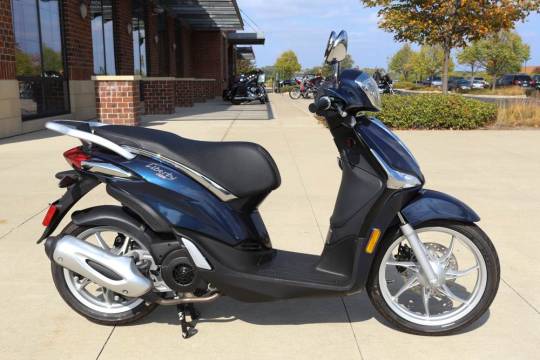
0 notes
Text
MONDIAL

Mondial was born from several small brands of Italian motorcycles that bloomed logo to Second World War. Com headquarters in Bolonha, em ele ganhou highlight when ganhou five world titles accelerate nas categories of pilots in 125 cc e 250 cc between 1949 and 1957, e five marks of paragraph.
At this moment, pioneering the introduction of freestyle discs in their models, as well as the use of motorcycles for a desmodromic system for the operation of valves. Or projeto of this system foi realized by Alfonso Drusiani, that desenvolveu a small cylinder DOHC of 125 cc that confronted the 2Ts slightly more time. The first three championships of the World Speed Championship were held in the category 125 cc (1949 to 1951) and basically the same system that later characterized Ducati. I do not know why the breeder of this brand, Borgo Panigale, Fabio Taglioni lendário designer, would work for two years in Mondial for Drusiani ordens before moving to join Ducati in 1954. Mondial foi inspired trabalho hair two Mercedes-Benz motors Benz, pioneers nessa configuração, or that face Mondial to first brand of motorcycles to use it.
Or succession of Mondial na competição Seu GP 125 foi tão unwrapped that for three seasons he never desistiu of a vitória against seus rivais Morini, MV Agusta ou Montesa. Atividade GP durou até 1957. MV Agusta and NSU então mostrou rivais as formidáveis, but Mondial got this year to dobro em 125 e 250 cc Tarquinio Provini through (125) e Cecil Sandford (250).
Ao lado das winning brands nas categories remaining world speed of two years (except sidecars), Moto Guzzi and Gilera, Mondial aposentado hair championship surpresa for next season. A decisão foi taken hair Count Giuseppe Boselli, um two four irmãos that founded a brand in 1929 Mondial FB (FB é um acrônimo for Fratelli Boselli Irmãos Boselli-) e foi uma absolute surpresa.
Mondial continued to be an important brand, not the Italian market. Na verdade, it was barely a hobby for the aristocratic Boselli family, whose main source is their extensive plantações e fazendas no sul de Milão. Eles never produced an 250cc motorcycle, more than any other brand specialized in light motorcycles and scooters with 2T motors, Mondial was distinguished by its high quality features. It was a smaller company than Moto Guzzi, Gilera ou Benelli, with an annual average production between 1,000 and 2,000 units of manually manufactured high-performance motorcycles.
Not final two years 60, Mondial turn to be competing in a series of 50cc scooter trabalhos two irmãos Villa, crafts motorcycles that benefited or sponsored by Count Boselli, embora nothing to see as department raças that dated in 1958.
A modern era of Mondial Um novo ressurgimento ocorreu em 1992 graças ao enthusiasm do filho mais velho do conde Boselli. Pierluigi developed a competitive Mondial Supermono mu with a 560 cc KTM engine. We will also work on a model of 125 cc rua models and 2T engines that never chegaram to see light. Naquela era, a brand called Mondial manufactured a scooter na Argentina, but never has any connection to the original Italian.
Em 1999, a denomination Mondial foi acquired by Boselli family by Roberto Ziletti, a graphic design magnate turned by motorcycles. Em 2000, Ziletti pediu permissão Honda to mount the V-Twin engine of seu SP-01 derived from two world champions of Superbike for nova Mondial piega 1000. Honda agreed as payment for services rendered, as in 1958 (year of its abandonment of competition ), Contagem Boselli pai doou Soichiro Honda um two models that ganharam or World of speed of 125 cc in 1957, serving as a base for or development of more recent models gives concordance of the company daa dourada. That motorcycle agora dá entrada no Museu Motegi da Japanese brand. Note that Mondial Piega 1000 was the first Honda motorcycle to assemble a Japanese company engine.
A produção começou em a factory built in Arcore, part of the Monza circuit. 35 foram units produced and it seemed to run bem quando a German AGFA-Gevaert comprou os negócios da Ziletti. It is also important to leave a motorcycle segment, both Mondial as VOR, for a brand that has also been acquired recently.
Mondial filed for bankruptcy in July 2004 and the brand name returned to the Boselli family. Now it has returned to the new era of the Mondial that starts with the HPS 125, a product of the future for a brand with a lot of past

0 notes
Text
BIMOTA

One of the most emblematic companies in the automotive world, the Italian Bimota has an intriguing history that for many years has held great fascination in motorcyclists of all ages and the world. The company was founded in 1966 by the signers Valério Bianchi, Giuseppe Morri and the illustrious Massimo Tamburini, the latter considered a legend of the world of motorcycles, as this engineer and designer was responsible for the creation of several of the most coveted motorcycles in the world, such as MV Agusta F4 and Brutale, the Ducati Paso, 916, 748, 996, 998 and Cagiva Mito.
The original name of the company consists of the initial two letters of the surname of each of the founders, ie BIanchi, MOrri and TAmburini. Initially it was a company that manufactured air conditioning systems.
Tamburini suffered an accident in 1972 with his Honda 750 Four in Misano (Italy), and as a result broke three ribs and destroyed the frame of the bike. While recovering from the fall, he built his own picture inside the Bimota sheds, using air-conditioning tubes. The unprecedented trellis frame was created, lighter and with a lower center of gravity, characteristics that were immediately transferred to competition bikes and still prevail today.
Only ten units were made of this painting, nominated as HB1 (Honda-Bimota-1). An interesting detail about the company's bikes is that Bimota did not make engines. So most of their bikes use engines from other manufacturers, giving the first letter of the models. So, in the example of the first bike, the "H" is because it was made on the project in the Honda 750 Four of Tamburini.
This new framework has become a trademark of Bimota. Other companies around the world have started ordering frames for other types of motorcycles. In competitions Bimota reigned absolute, with the frames YB1, YB2, YB3 and HDB1, HDB2 and SB1. These were of far superior quality at the time, drastically changing the sport. In the late 1970s, Bimota also started building high-octane motorcycles for ordinary consumers, but they became exclusive motorcycles. And this is a niche that still keeps the manufacturer on the market.
In 1983 Tamburini leaves Bimota and Federico Martini enters in its place. Martini brought a long Ducati experience and continued and did a brilliant job at Bimota. It was in this period also that the known DB (Ducati-Bimota) appeared.
Still in 1983 a legend arose. Bimota showed Tesi 1D in Milan. The first of the "Tesi" series with a striking feature, the steering made up of a hub instead of the traditional telescopic forks. The front suspension works with a mono-shock system, which is hidden inside the fairing, giving a futuristic air to the bike. But for the modifications to be accepted, numerous safety and performance tests were carried out, which took seven years of development and refinement, and the bike was only launched commercially in 1990.
In 1996 Bimota created its first motorcycle with its own engine at V-Due. With a two-stroke 500cc V-Twim engine, it used electronic injection created exclusively for this model due to the restrictive pollutant emission standards of Europe and North America. Only 340 were manufactured. However, the project did not go much further because of a engine engineering failure that forced the factory to perform a recall on all 340 units and that hurt in Bimota's pocket.
In the season of the World Championship of SuberBike of 2000, one of the main sponsors of the brand did not remain, which accelerated the end of the factory that, at the end of the same year closed the doors. Only in 2003 a group of investors bought the rights of the brand and Bimota resurfaced from the ashes. Today it is considered as the "Ferrari of Motorcycles", where each copy is unique and all are handmade, in the same place where it was founded in the 60's in Rimini, maintaining the best Italian style of being and making motorcycles.
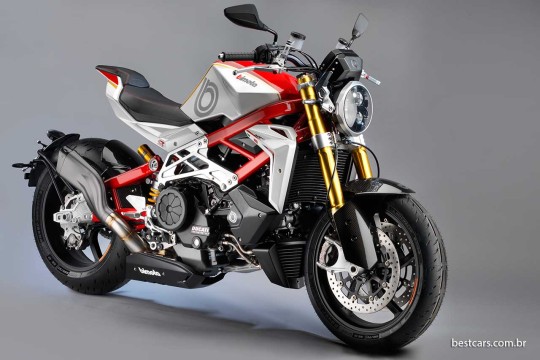
0 notes